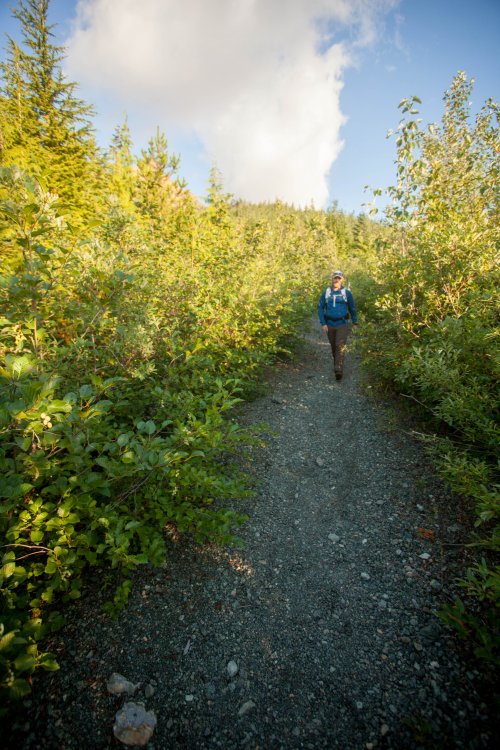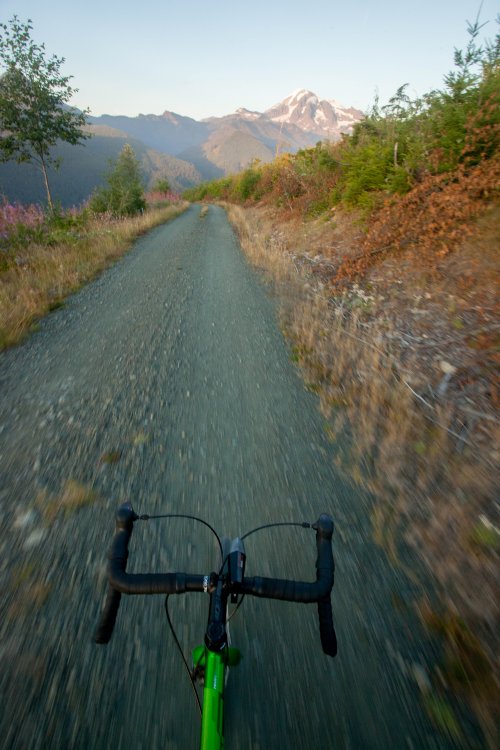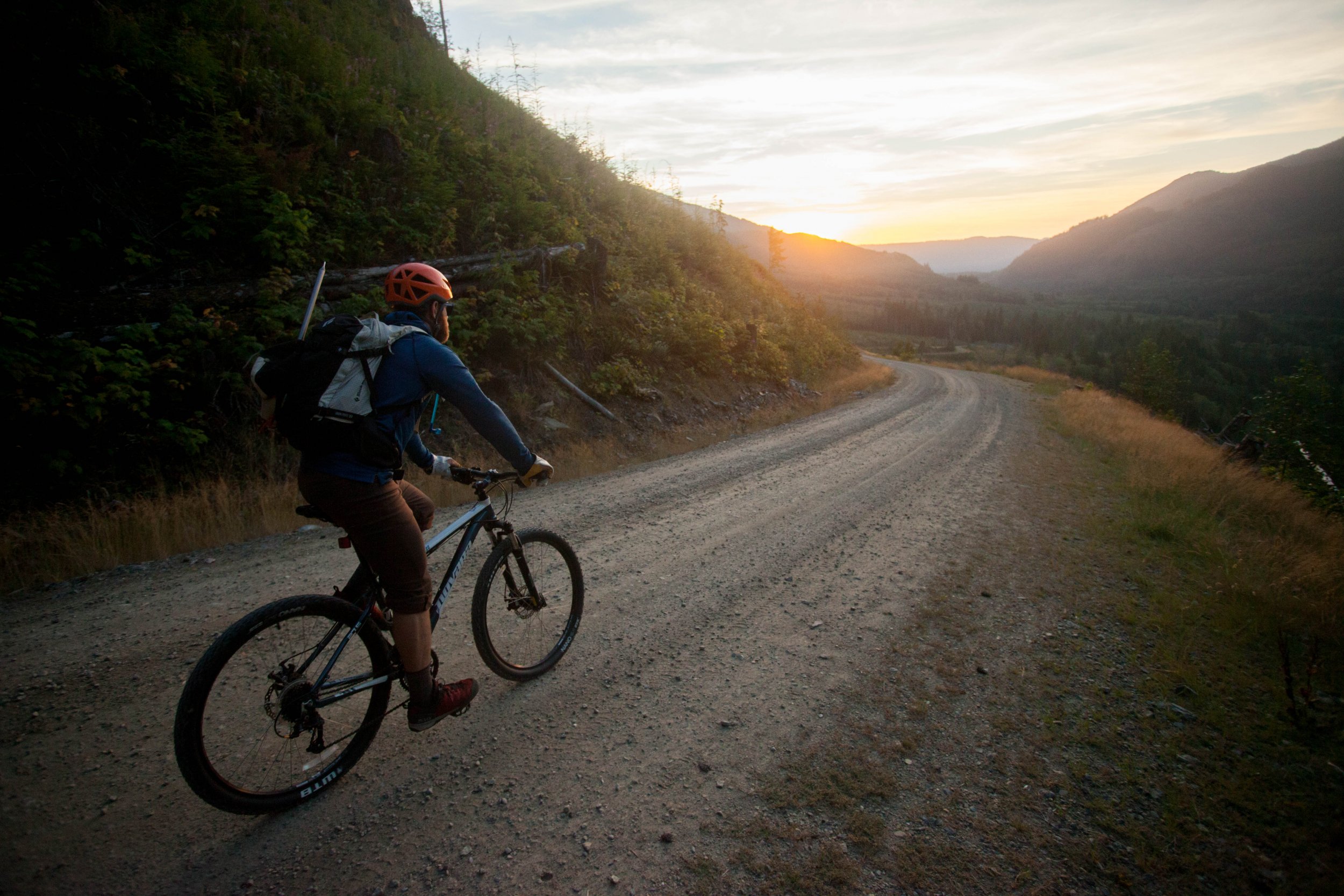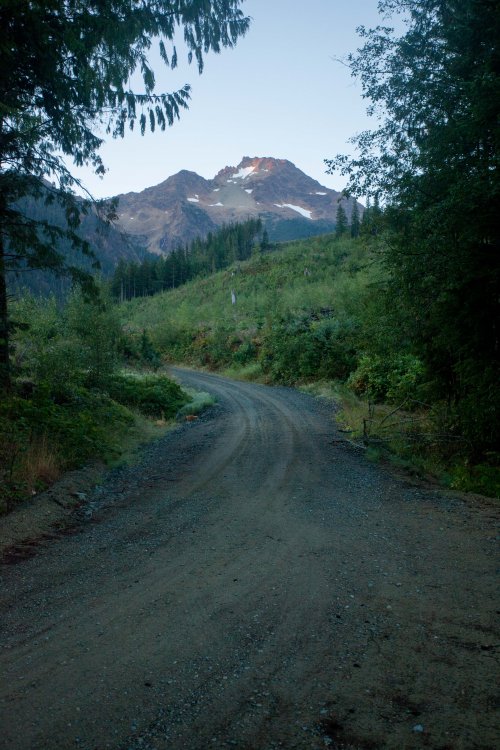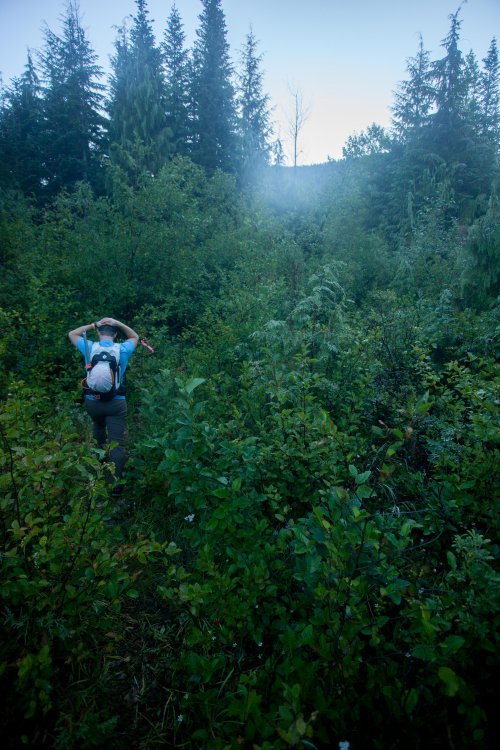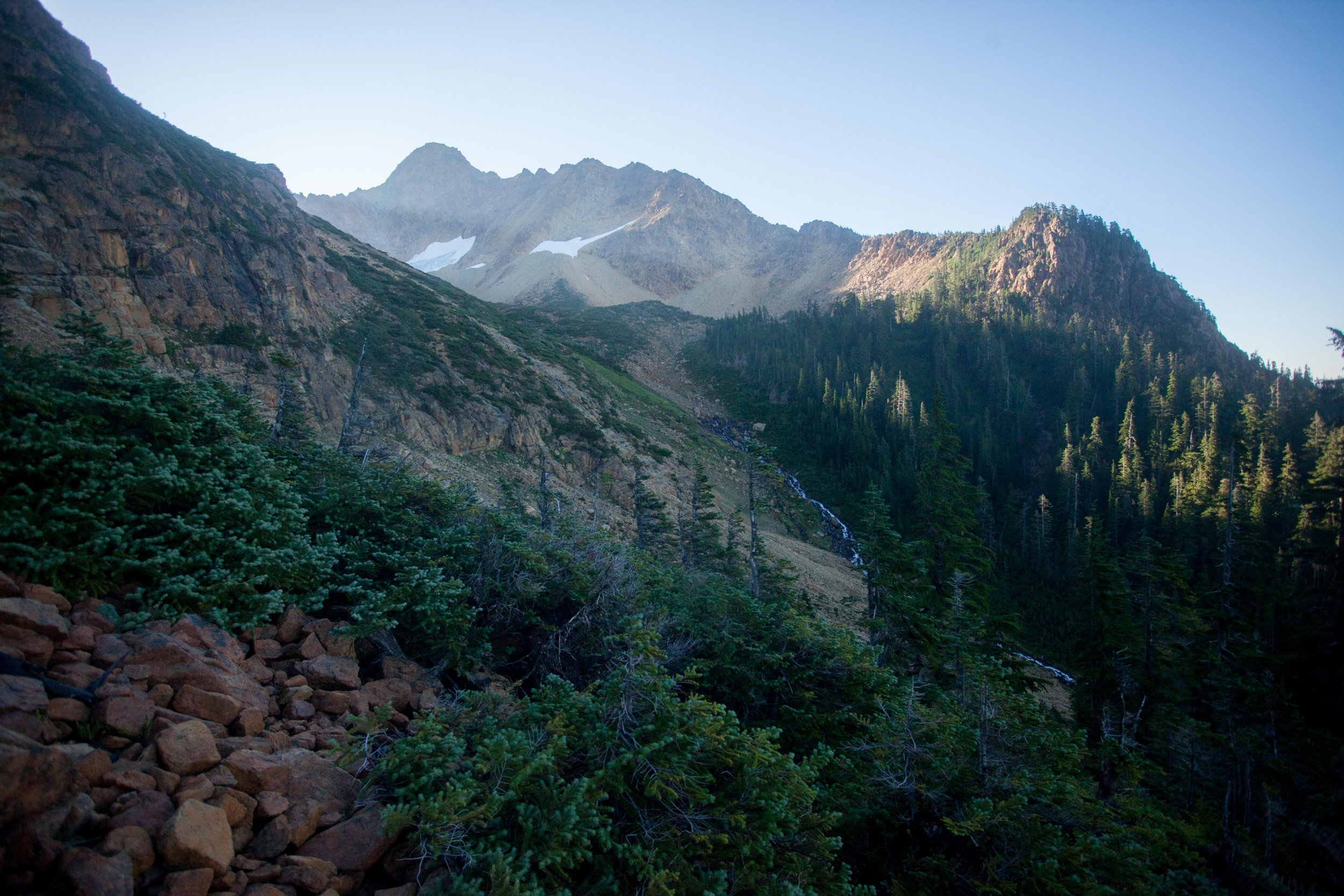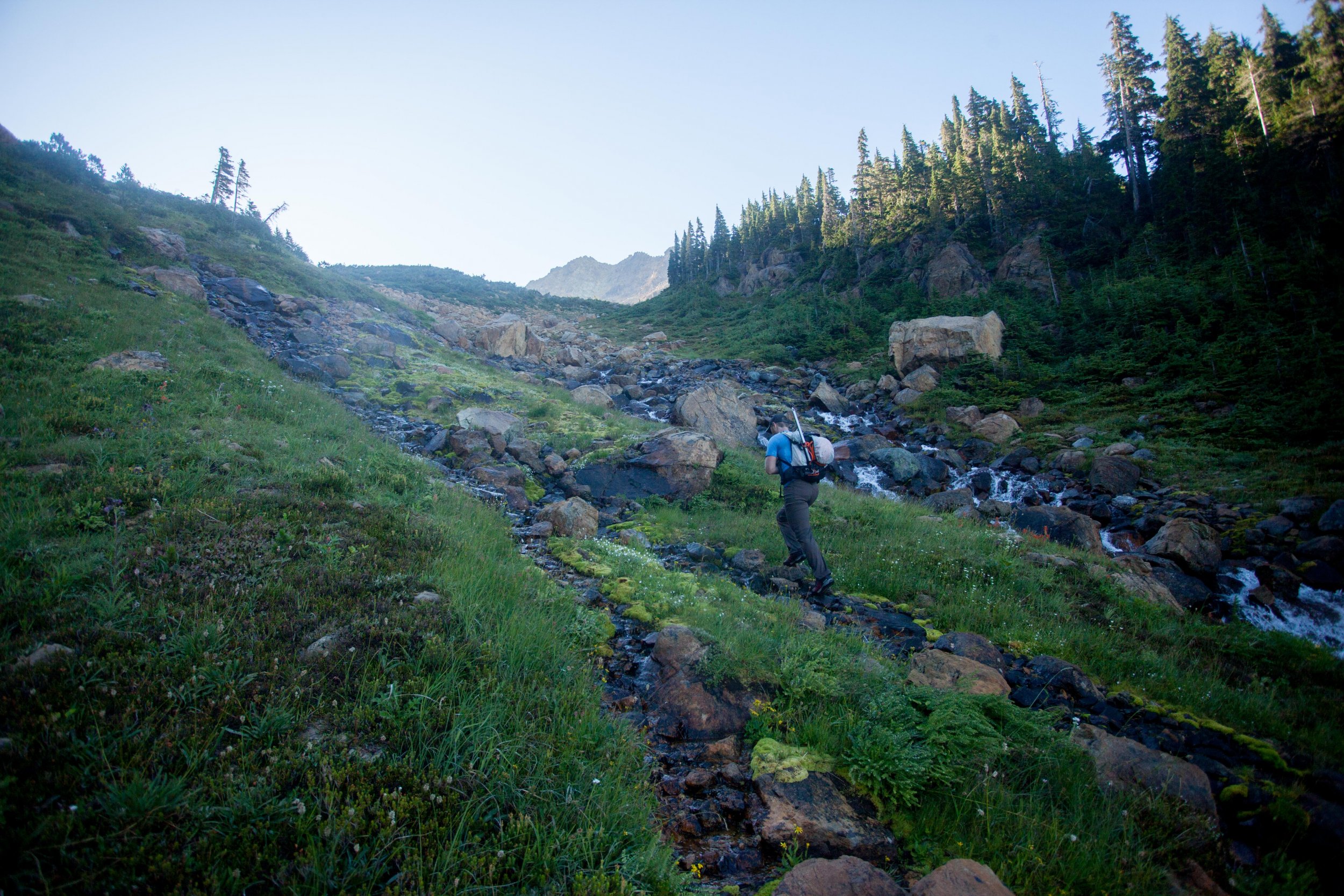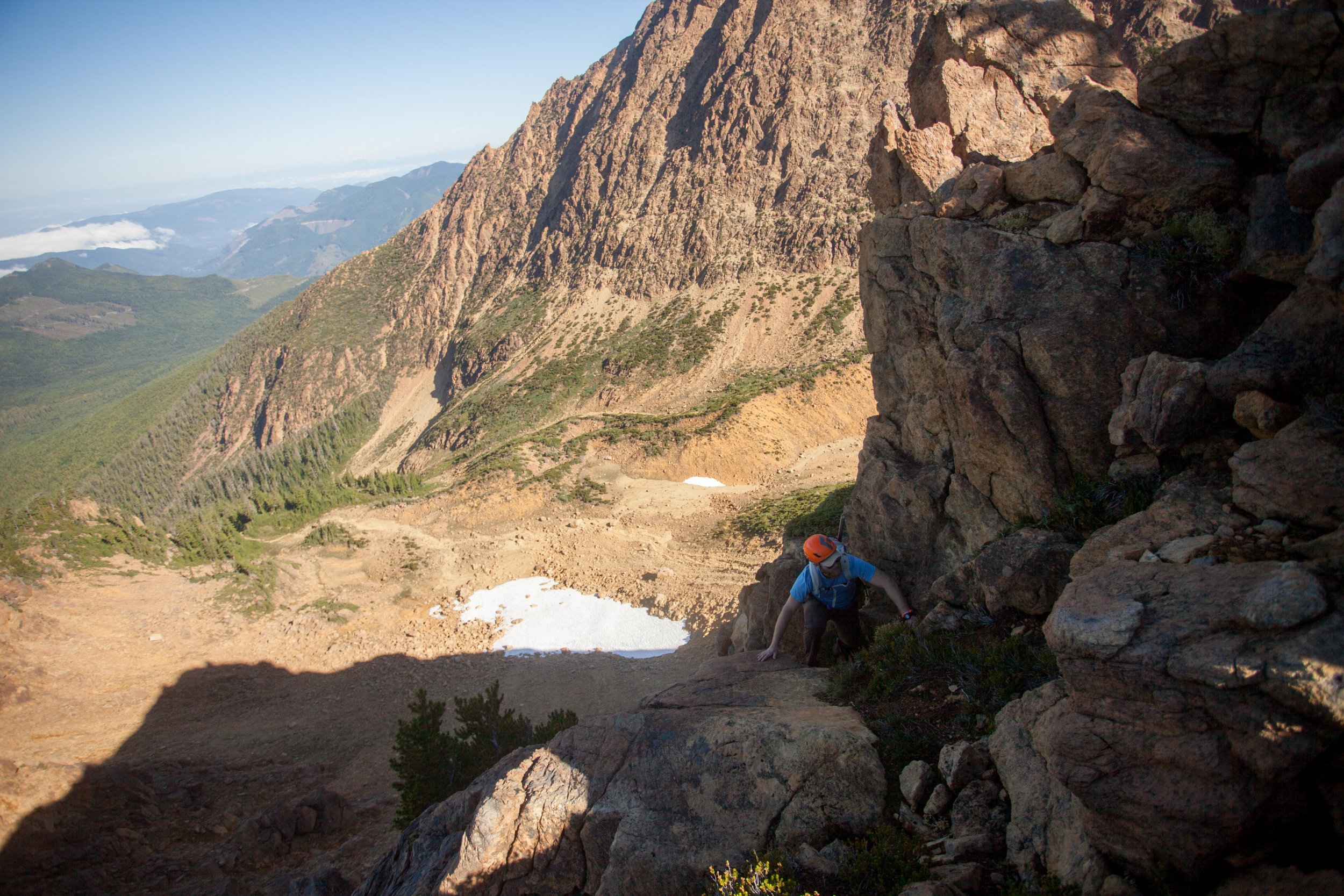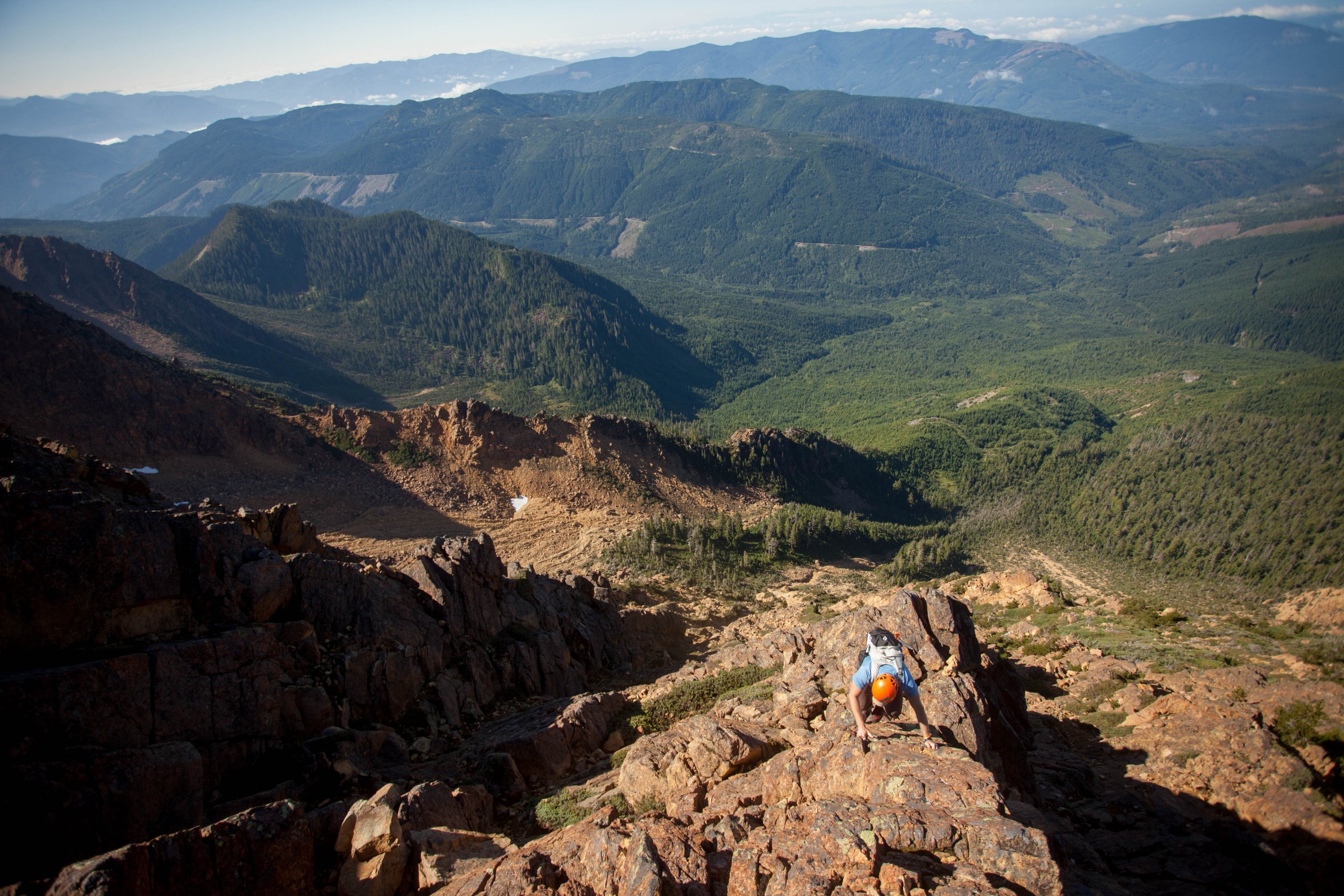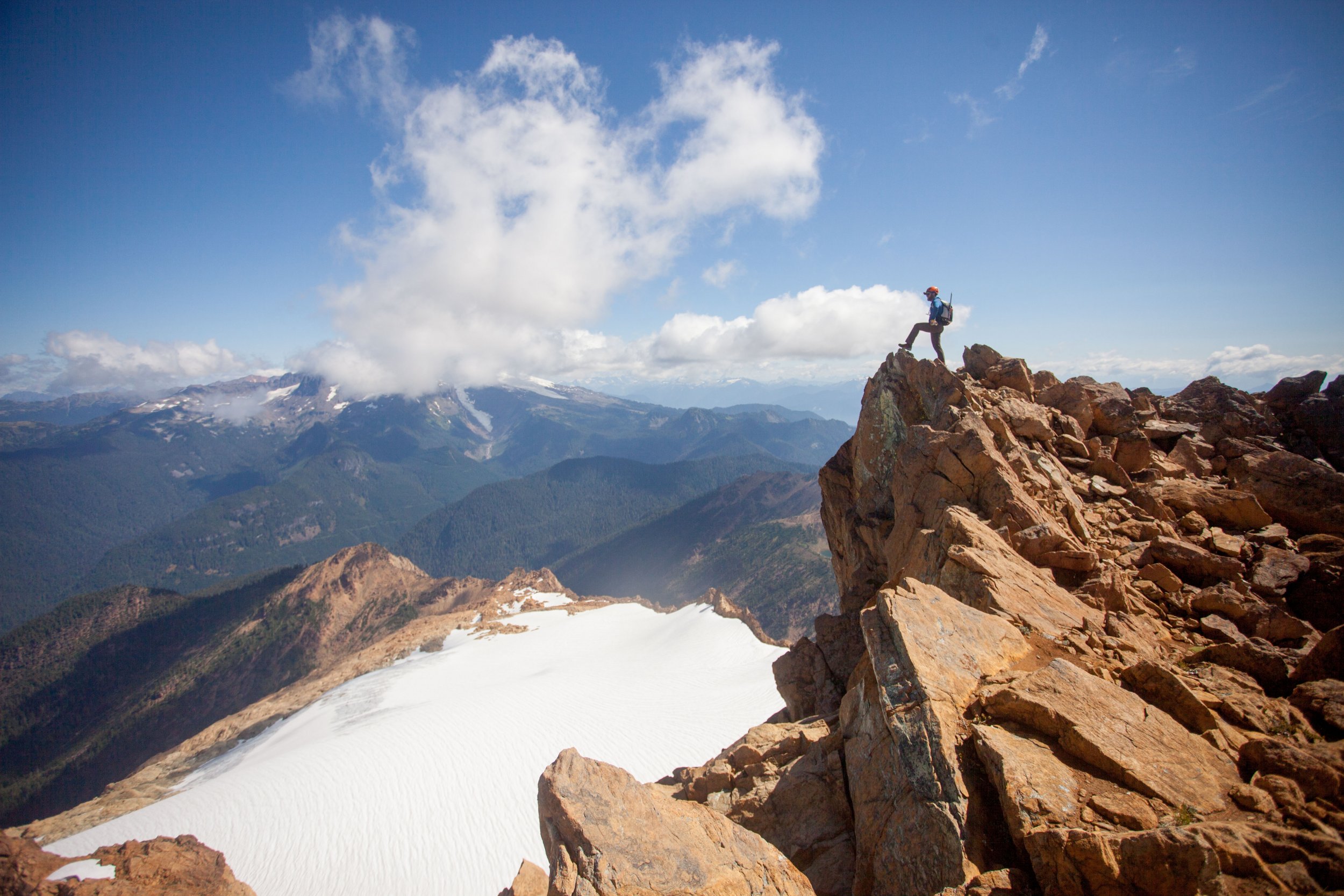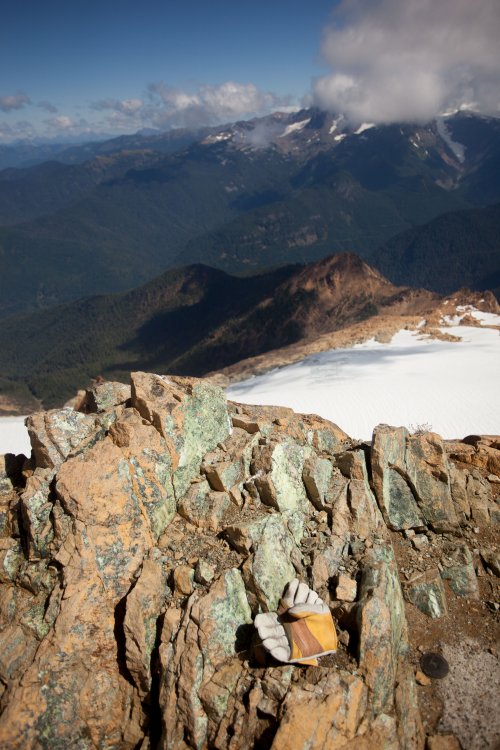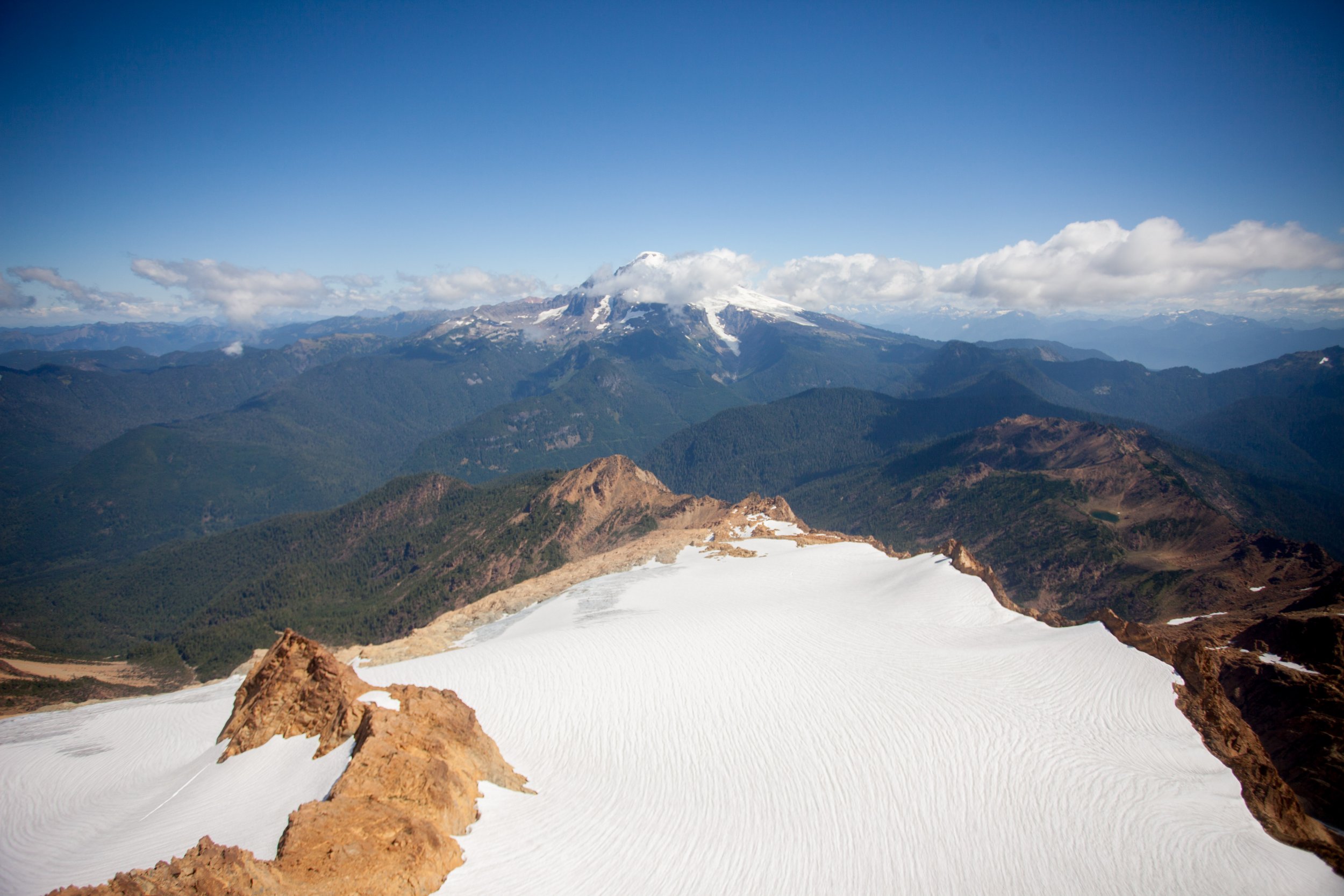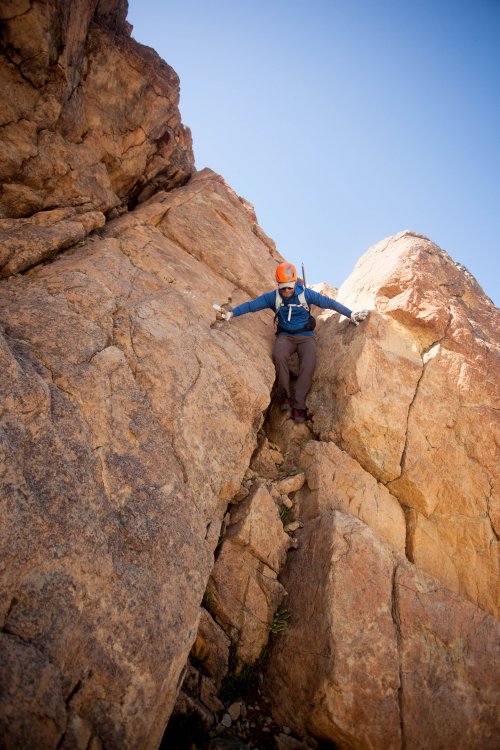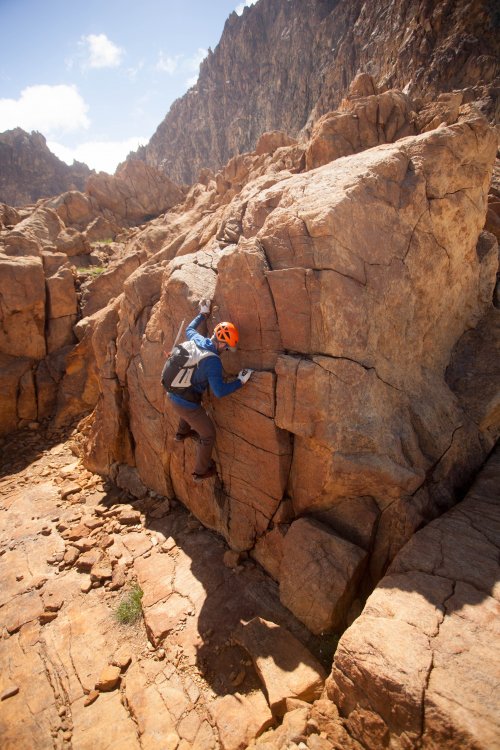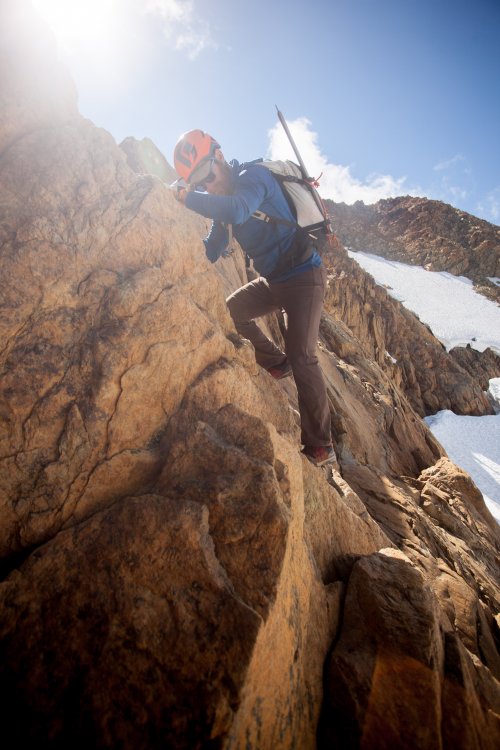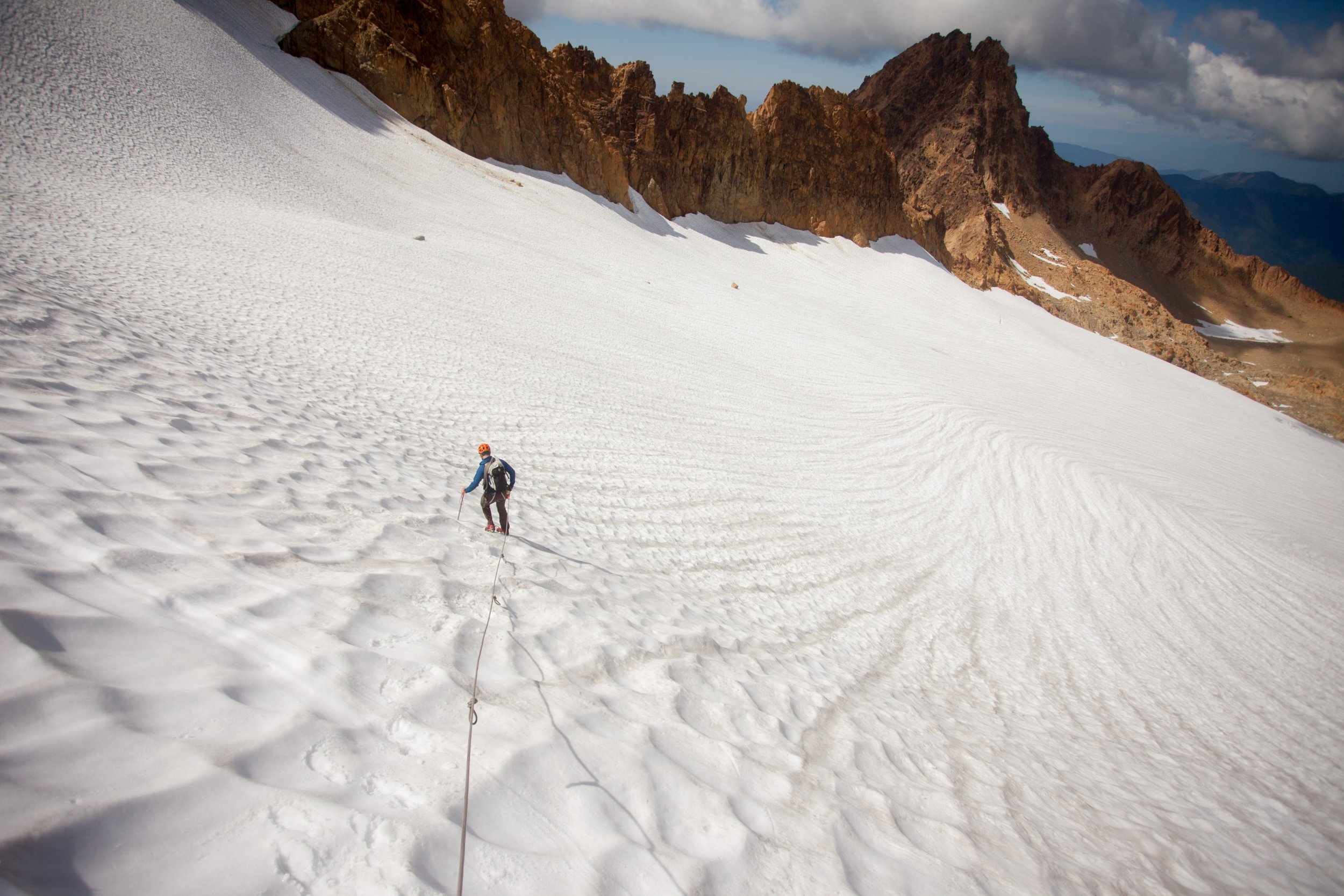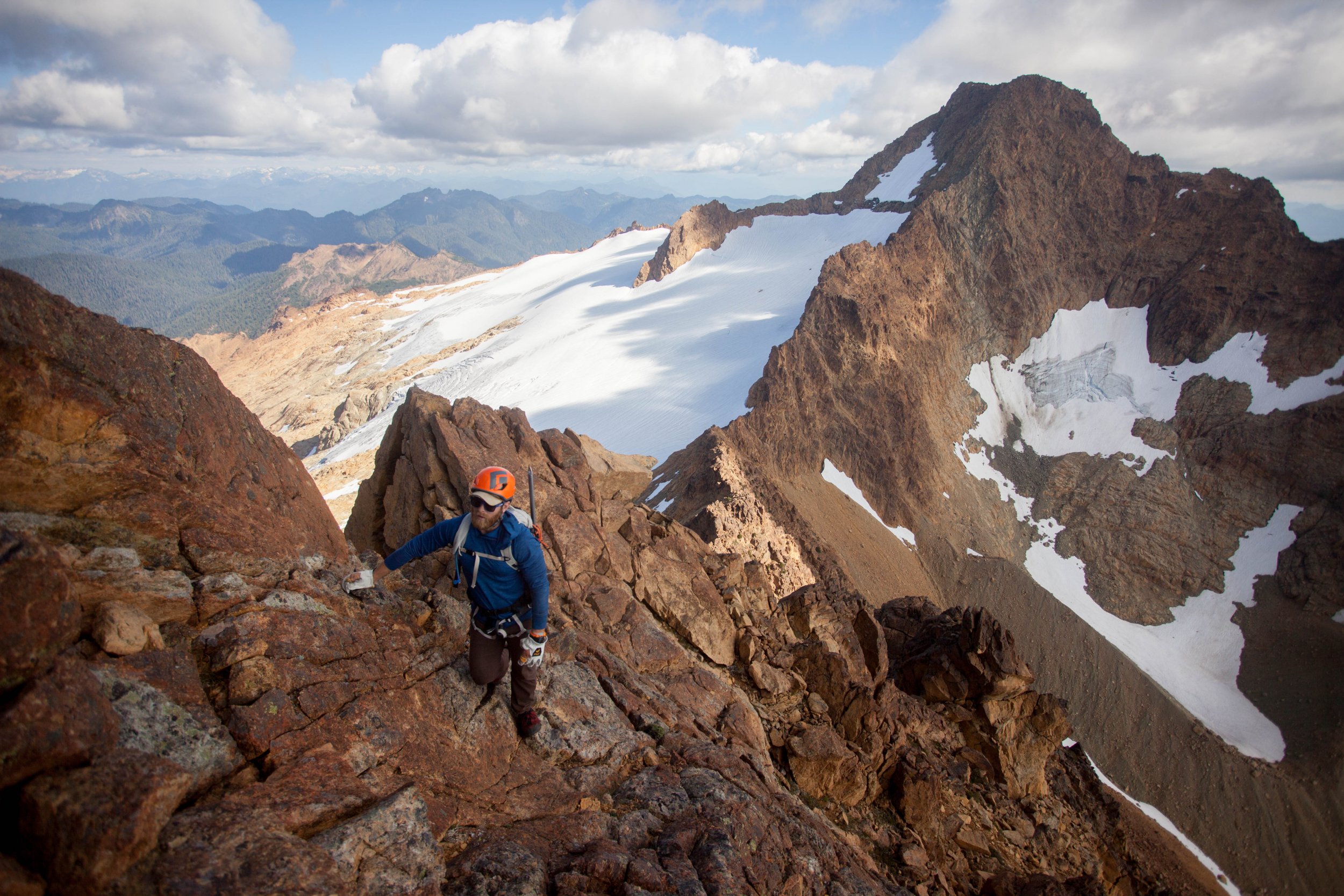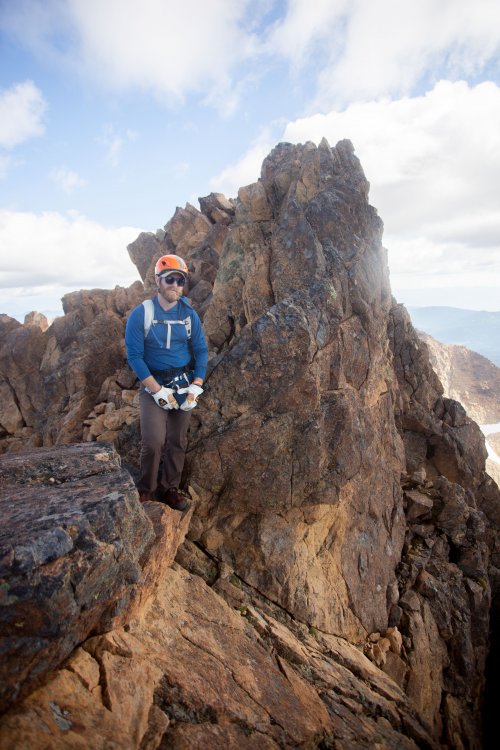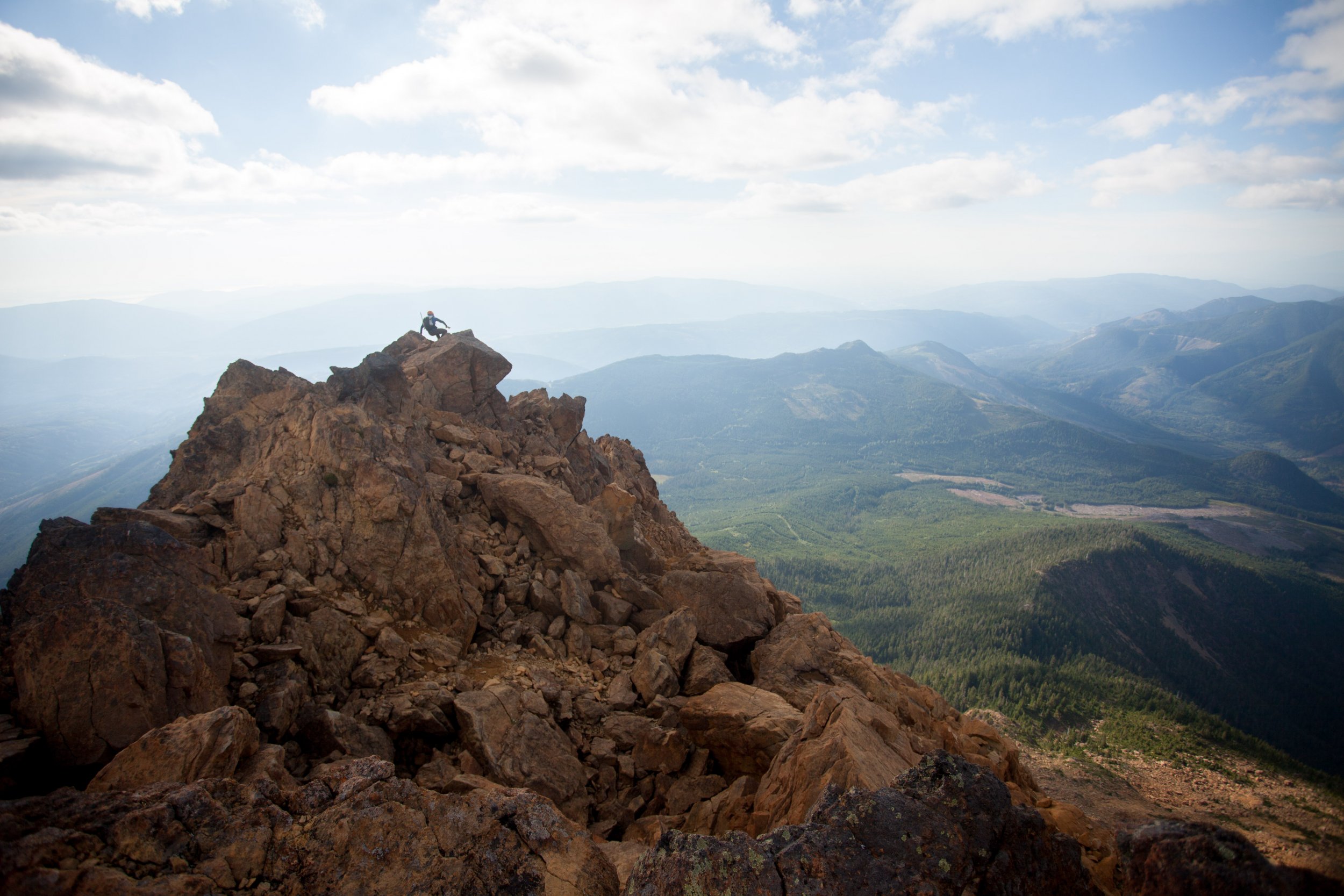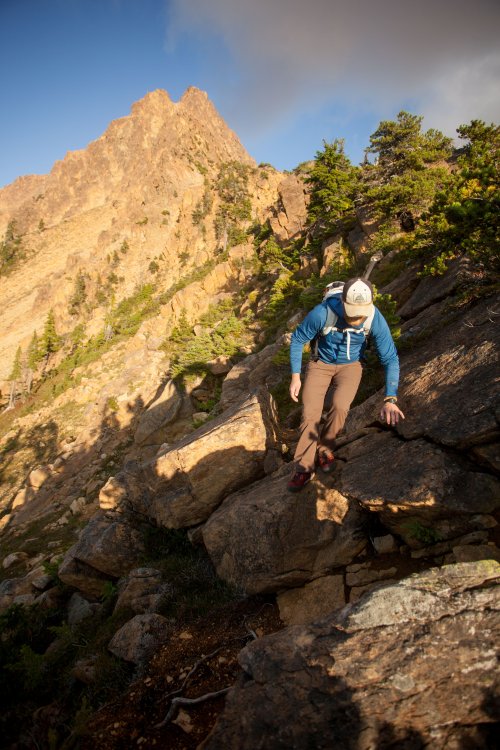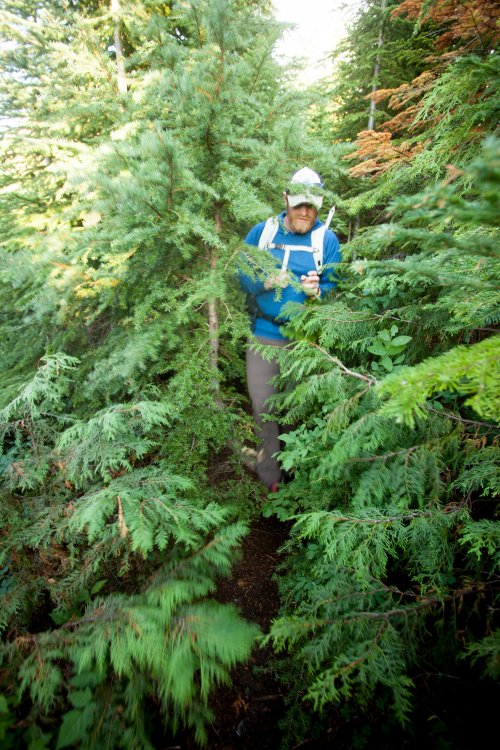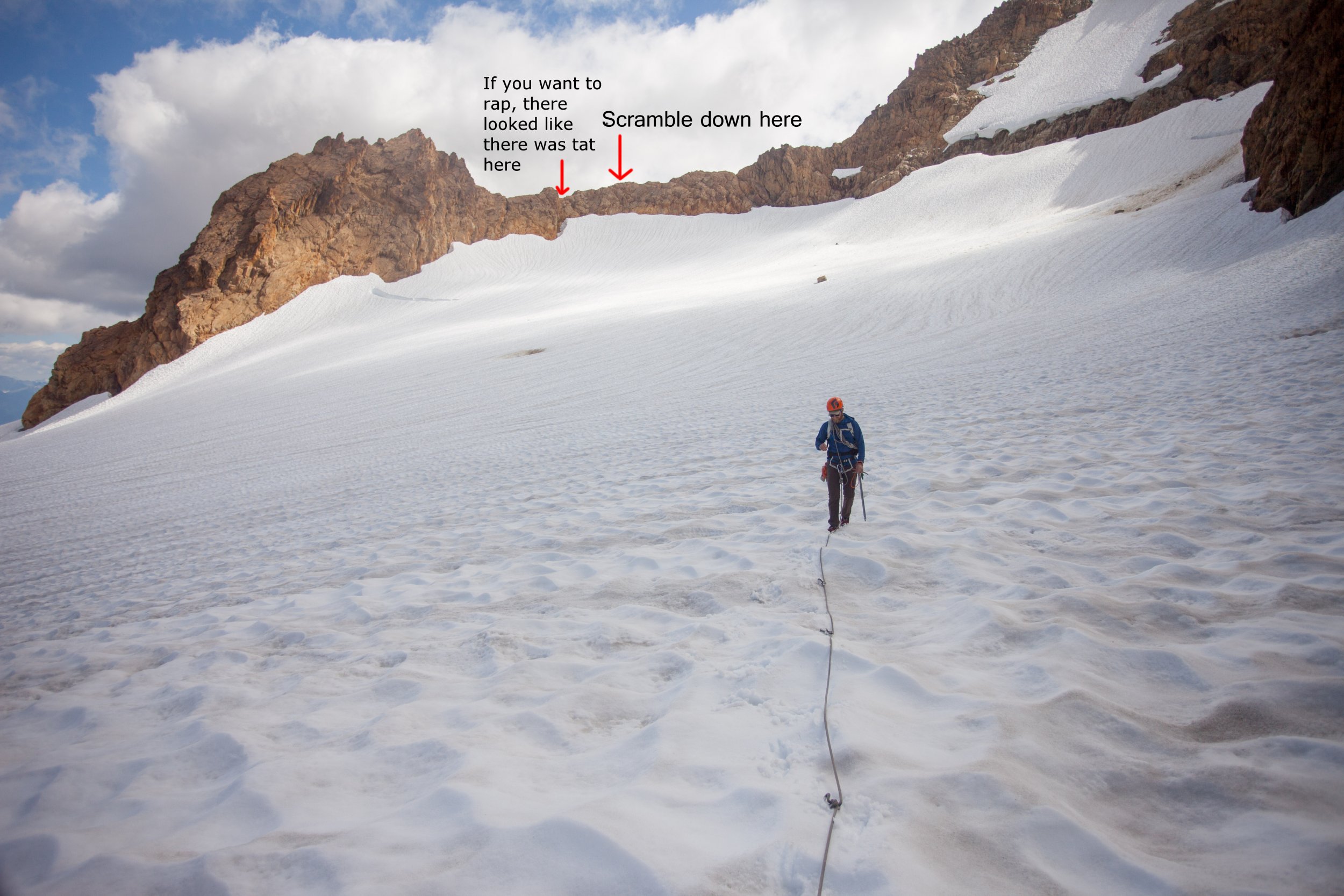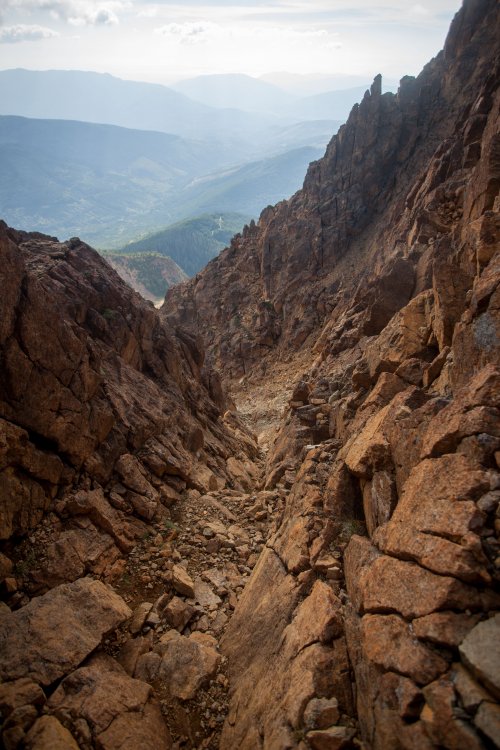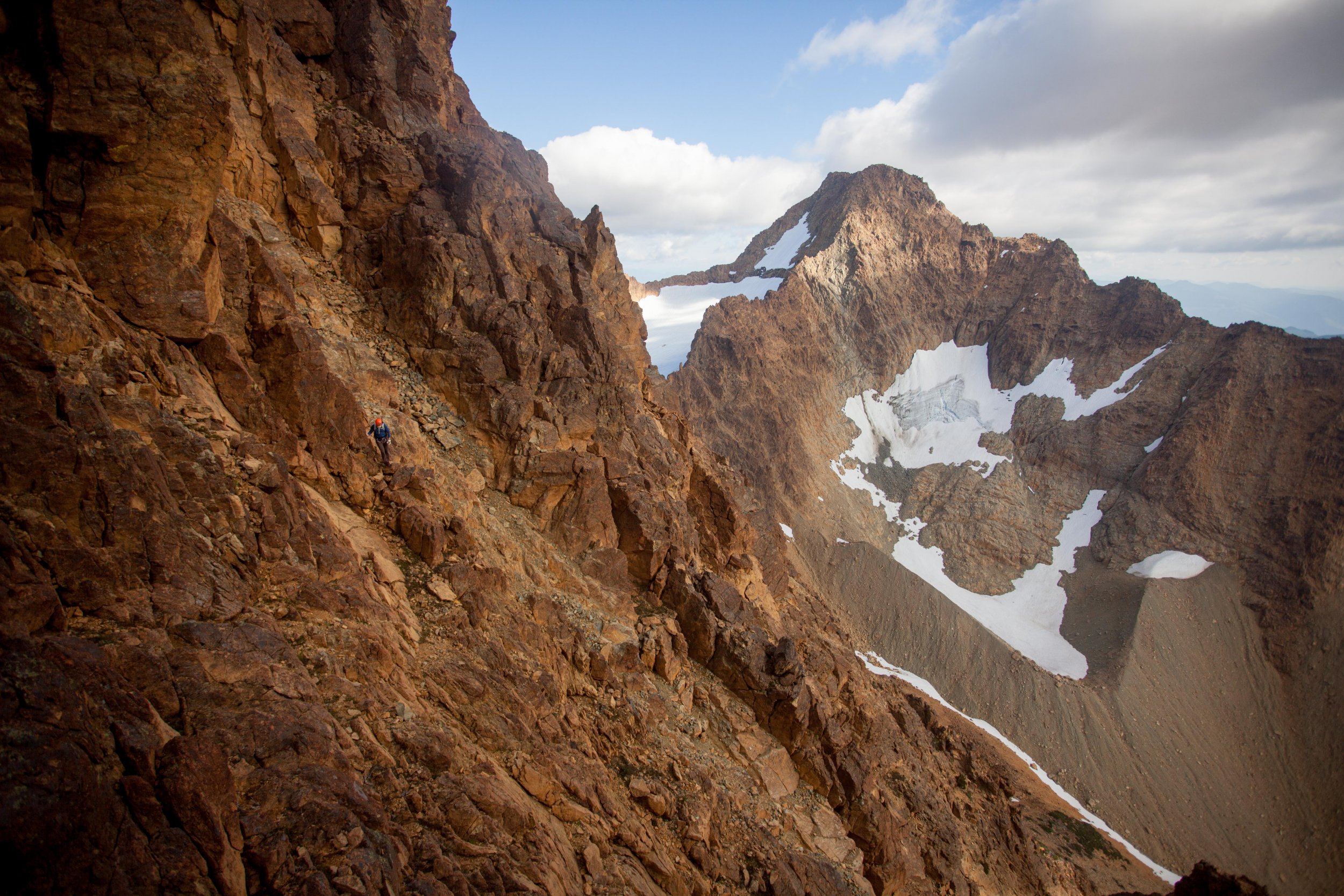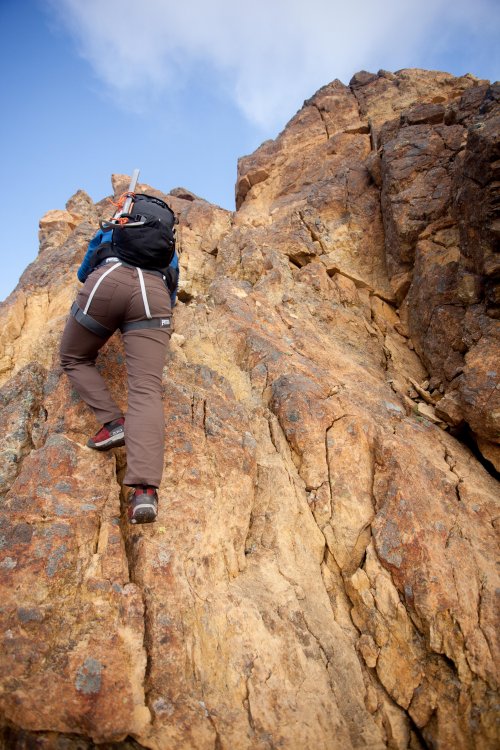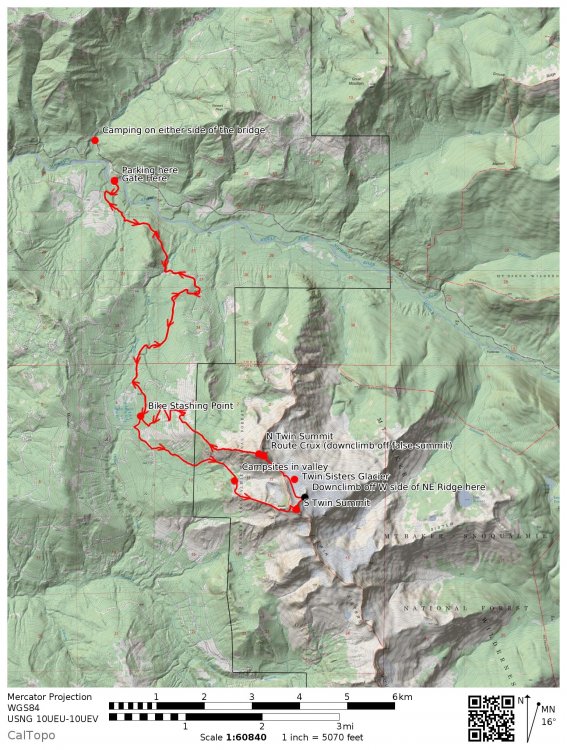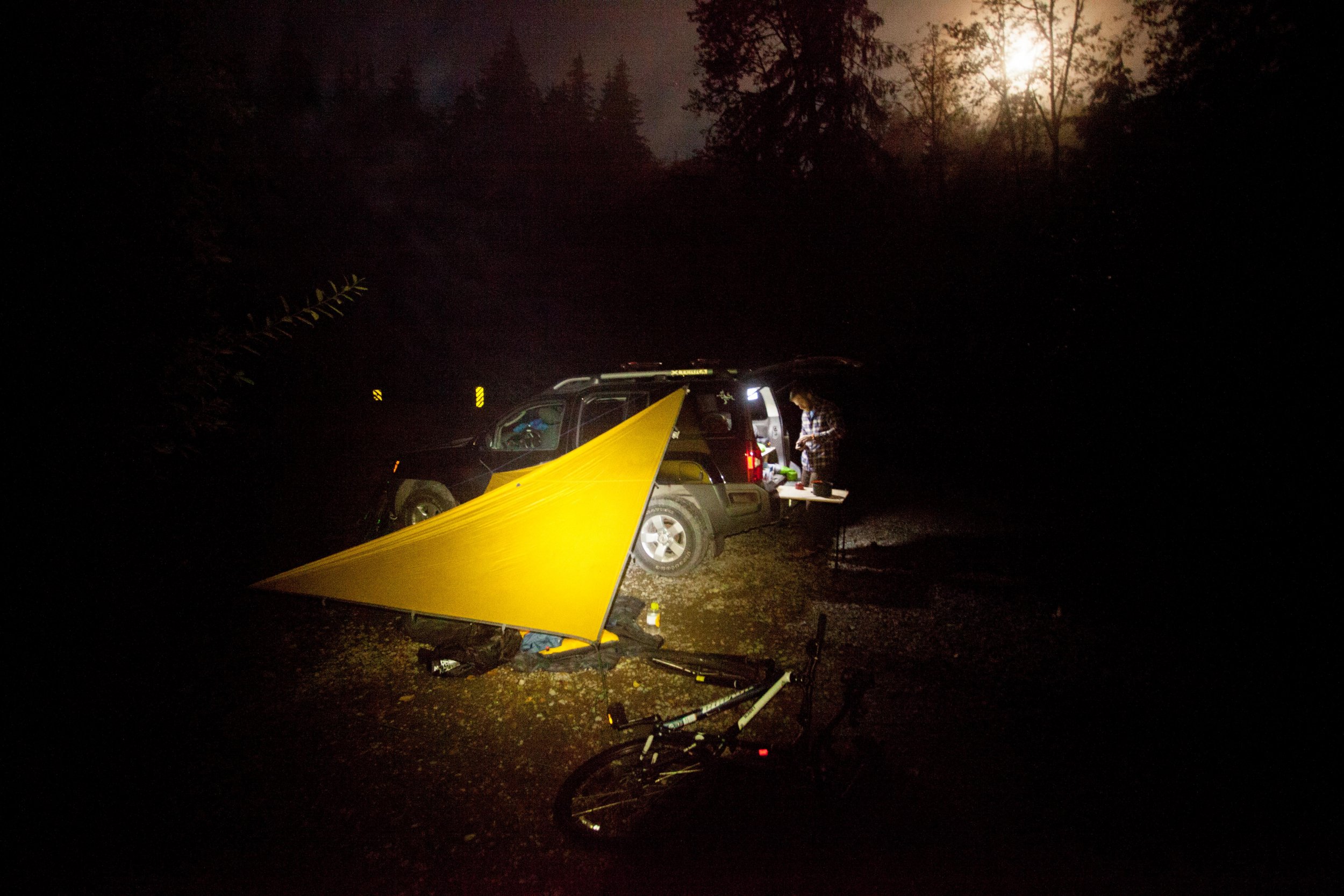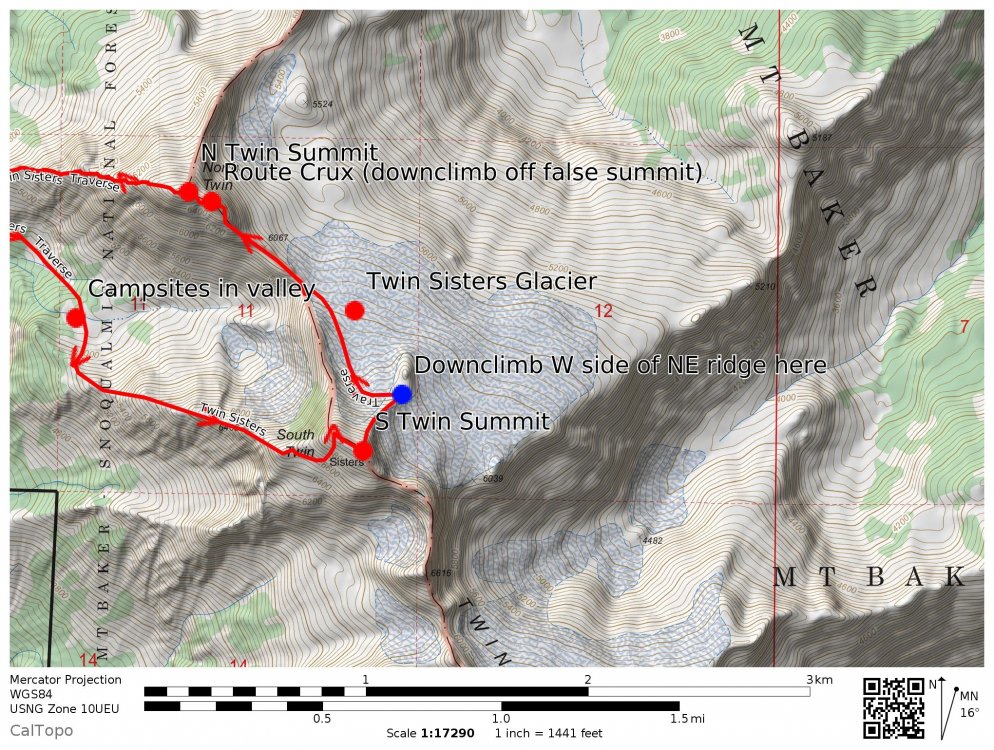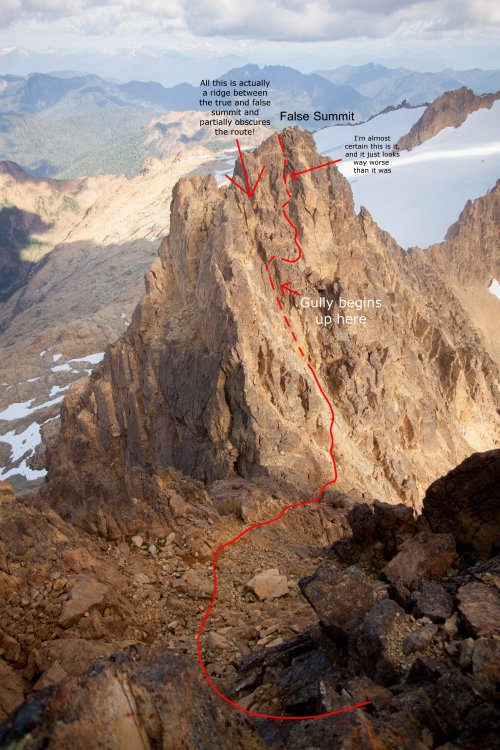Search the Community
Showing results for tags 'traverse'.
-
Trip: Northern Pickets - Phantom Peak, Challenger 1/2/5, and "The Bat Wing" Date: 7/30/2015 Trip Report: Over the past year plus, Mario (a prolific Pickets schemer) had sold me on the idea of completing a North-South Pickets traverse this summer. We had attempted this traverse in 2008 but, after several days in a whiteout near Pickell Pass, with dwindling food, time, and spirits, we abandoned the route Southward and ended up going out to the East. I had taken the last four years off from Picketeering as a new father, but the idea of seeing Picket Pass firsthand was a big draw for me, a sideways summit of sorts. However, as this year's trip came closer, several facts became apparent. First, snow conditions were historically low, making the traverse route more dicey. Second, Mario was, as he puts it, "getting old" and was going to need to tap out of the trip due to a number of nagging injuries. This left Sandy, Matt, and me wondering about objectives. In 2009, when doing new routes in the Challenger group, i recall looking into the heart of the Northern Pickets and seeing the profile of Phantom, with its West Ridge dropping towards Picket Creek. In 2011 Keith, Mario and I made an attempt, but in classic Pickets fashion, the weather closed in and shut us down. This year seemed like a good opportunity to go take a closer look. There is no simple way into the Northern Pickets. As Select Climbs says, "the pilgrim pays a price." Perpetually hopeful for a break, we tried hiking from Hannegan to Whatcom Pass, and around Whatcom. While this approach is long, it is also scenic, relatively gentle, and has almost zero bushwhacking, and so less sucky for big packs on the way in. The initial hiking went smoothly. Sandy was Mr. Water, whipping out the Steripen (scary-pen?) at every stream to keep up sloshing happily along. The only setback was that Matt's shoulder strap attachment blew apart under the load, but Sandy came up with a nifty field repair that saved the day. Leaving the trail and the people behind, we moved towards the Whatcom glacier. The icefall this year is scary. With so little snow, the ice that is there seems more active than normal. We hustled across, and began scheming alternate return routes. I felt more anxious than i recall from previous Pickets forays. The ever-increasing remoteness and commitment as you head deeper in are always factors here, but with increasing age i also have a greater appreciation for my own mortality, and most importantly an extremely strong desire to be there for my little girl growing up. As we made camp on the rock benches on the Southeast side of Whatcom, i wondered what the heck i was doing there. Morning brought improved spirits. Briefly... until we watched a snowfield on Whatcom's South side spontaneously crumble into ice blocks ahead of us. Hmm, yeah, lets definitely hike up higher and get above all this crud. Studying the Challenger glacier brought more concerns. The standard low route from Perfect Pass was out, broken into a thousand shards. We'd need to figure something else out. Heading straight up the ridge above Perfect Pass towards Point 7696 until we could gain the glacier higher seemed like our best chance. We hadn't been that way before, but it turned out to go just fine. We passed debris and then the plaque from the 1980 Firewood One helicopter crash. After some fine alpine rambling, we reached a saddle with good glacier access. Although the upper glacier was more open than i have seen it before, Matt was able to pick a fine route and soon we were at Middle Challenger Col. Shenanigans ensued. The spot at the East edge of the col where we have rapped twice before was unreachable due to larger than normal moats. An alternate rap station on the West edge looked promising, but with the low snow year it didn't look like our single 60m rope would reach the glacier below. We threw it down to measure, it didn't reach, and so we decided to pull it up and instead try the route between Challenger 4 and 5. However, the rope got wedged trying to pull it up. I threw on rock shoes, rapped down, and cleared the rope. However, once down there it was clear we could easily set a second station and make the route go, and so we reverted back to plan A. The second rap involved some moat wrangling, but eventually, after much wasted time, we made it through. Feeling a bit short on daylight and energy to make it to the Phantom alp-slope camp, we decided to camp at a beautiful site below Crooked Thumb. In the morning we set out for Phantom. Interminable scree fields, and lots of going down in order to go up, made us happy to have day packs instead of our full kit. (photo by Sandy) As we approached, i kept looking up at Phantom's West Ridge and wondering/doubting if i had the mojo for an FA. I kept my mouth shut, in that chess game of climbing partners wondering which way the moods would align. Arriving at the saddle in the ridge, I got my answer. Matt said no way to the unclimbed ridge, which brought me 95% relief and 5% disappointment. Sandy then pulled out his crocs (which he had stealthfully brought from camp) and declared that he was going to spend the day soaking in the view from right there at the saddle. (photo by Matt) And so, Matt and I, with excitement, set off on the Southwest route on Phantom. The cleft between Phantom and Spectre is an awe-inspiring place. Spires jut up all around you. The Haunted Wall looms overhead. The sense of remoteness is massive. The first 1000' went rapidly up what little glacier remnant remains. (Throughout the range, many of the glaciers look withered. A few more dry/warm years and some will be gone. Geologic time is now!) Then we cached our boots and snow gear, and switched to rock shoes. Scrambling the next 1000' over surprisingly clean rock brought a great sense of flow. As i moved the last few feet to the crest, i realized we were at a false summit. The traverse to the true summit looked sketchy, so we took out the rope and rack and i led over lichen-crusted plates to the top. (photo by Matt) The position was amazing. I though of Wayne and Josh on their Northern Pickets traverse in 2005, and Jens and Chad in 2013 on their complete Pickets traverse, and wondered what they must have felt on this summit, with more spidering narrow crests yet to run. Matt came over, and we opened the summit register. The feeling was what i picture an archeologist feels opening a tomb in Egypt's Valley of the Kings. There was Fred and Helmy's first ascent entry from 1940, followed by a list of fellow Picketeers, only about two dozen recorded parties in all. In ten trips to the Pickets, this felt like my most wild summit yet. The descent demanded full concentration, and so when we reunited with Sandy at the saddle, we were happy but drained. Splashing in the meltwater streams at the Phantom alp-slope campsite was pure joy, but the hike back up and across the boulders was pure scree-vil. Exhaustion ensued. Followed by celebration. Followed by turning off the alarm for the next morning. While Spectre and Swiss had been on the maybe list heading in, at this point they were taken out of consideration. Our new plan was to go get some various Challenger summits. Matt hadn't been up main Challenger yet, and i wanted to tag some of the sub-summits. We packed up and headed up the new to us route around the back of West Challenger on ledges, which went smoothly. Then we continued over the Solar Glacier, to the Challenger 4-5 Col. There we made camp complete with lovely paved patios for both tents. Let me tell you, these boys can dig and landscape! That afternoon consisted of a favorite type mountain climbing: finding objectives within spitting distance of camp, that can be tackled with minimal packs and late starts. Target one was Challenger 5 (aka Point 7696). The three of us moseyed West, and then did one steep snow pitch. After that, a short enjoyable rock scramble took us to the summit. I love sharing sunny afternoons in the mountains with great friends like these. After returning to home base, we then set out on objective two for the afternoon: the rather insignificant but attractive ridge just West of the 4-5 Col. I suppose you could call it Challenger 4.33, but we called it The Bat Wing. Matt and i ran the wing-like ridge line, and then a pitch beyond that isn't visible in this photo, to the highpoint. A probable first ascent of something no one cares about. But damn was it fun. That night i expected to sleep soundly but neither Sandy nor I got much rest. At alarm-o'clock Matt and I hopped up, but Sandy pulled the sleeping bag over his head and said something to the effect of "madgamgmmmmamdfgamgdagdmm". Matt and I headed towards main Challenger, bearing high on the glacier all the way to its East edge. From there, the standard path between crevasses led towards the steep final slope and the summit ridge. Matt grabbed the rack and led the money pitch. I love that summit! We soaked in the views, including an impressive mushroom cloud of smoke coming from the Wolverine fire. After backing down the upper snow slopes, we headed for Challenger 2. (photo by Matt) Some easy snow and moat climbing, followed by a rock scramble, brought us to that summit, for me the last one of the five that i hadn't been up. All Five Challengers achievement unlocked! We cruised back to camp, broke it down, and headed down to Perfect Pass. As usual, it was, well, pretty perfect. We choose to descent via Easy Ridge (a cruel name if you ask me). I've been up that way a few times, but going "down" (which has a lot of up) seemed like nearly as much work. The abundant blueberries sweetened the work considerably. After a final night beside the Chilliwack, we hiked back to the trailhead. While we had waited out a couple of days of bad weather in Seattle before starting the trip, we had enjoyed eight days of near perfect weather in the mountains. I'm not sure how many big Pickets trips i have left in me. But, maybe some day i'll get to take my daughter to see Challenger ... now that would be a thrill. Sandy and Matt, thanks for being such great partners!
- 13 replies
-
- 1
-

-
Trip: North Cascades - Mt. Challenger to Luna peak Trip Date: 07/13/2021 Trip Report: From 7/13 to 7/21 myself (Jeremy) and my climbing partner (Ben) traversed along the base of the Northern Pickets and did a bit of climbing along the way. The story, however, starts a bit further back than that. My first attempted foray into the Pickets to climb Challenger was 20 years ago, and it ended almost as soon as it began. A nagging knee injury irritated by 2 weeks in the Tetons and Wind Rivers flared up as I trudged along the W shore of Ross Lake...The trip ended before we even reached Big Beaver. I never quite got the disappointment out of my head, but living on the other side of the country made planning a successful trip back there a lot harder than I appreciated. One year it was too much snow and we climbed Ruth as a consolation prize...another year we fell short on time, turning around at Perfect Pass to make it out in time for our flight. Last year was a pandemic...I work in a covid ICU, and the idea of one of us contracting the bug and then getting symptoms in the mountains wasn't worth the risk. So here we are, 20 years later, and I was willing to give it one last go. I'm no spring chicken anymore...arthritis is off to a quick start, and I never really developed the discipline to train. I'm not even a weekend warrior, more like an every third weekend warrior, but only if it isn't too hot out, or if there isn't beer to brew or board games to play. In short, I am a softer, weaker, and somewhat more rotund version of my younger self that first had Picket dreams. This trip we gave ourselves 8 nights in case of bad weather and to accommodate my sub par fitness level, plus I wanted to visit Luna Cirque if time allowed. Having come in via Easy Ridge before, I wanted to try a different approach, one without an imperfect impasse, so we took the water taxi to Big Beaver. The water taxi driver asked about our plans and upon hearing them gave us a lengthy, silent, and knowing smile that communicated volumes- it completely psyched me out. Our first day was short, ending at 39 mile camp with smoke haze visible on the peaks above us, though we couldn't smell it. Day 2 dawned with no smoke from the east side fire. We took the trail to Beaver Pass, leaving it about 100 meters past the shelter. The bushwhack over to the narrow rib wasn't bad at all, nor was travel to the first cliff band. After that things got steeper, and the going slower. It didn't help that I had gone a bit light on food and decided to ration the first 3 days...2 granola bars between breakfast and dinner was rough. Upon reaching the top of the second cliff band we filled up on water, knowing we would probably not make it much beyond treeline. We followed beta from the many helpful trip reports on this site to bypass the cliffbands, making camp around 5600' where the meadows begin. Bear scat was noted there, and the mosquitoes had me pull out my head net for the first time. We enjoyed sunset on Luna Peak and turned in for the night. Day 3 again dawned clear with no smoke. While we could see the fire clearly to the east near the pass, the smoke blew north and presumably east for the remainder of the trip. We made good time to the beautiful pools others have mentioned finding and stopped for breakfast. We had a bit of trouble crossing a tree lined cliff descending from north of Eiley lake, but once we found the correct gully we made it up to Eiley lake without too much trouble. Wiley lake followed soon after, and we had a decision to make. We had the most beta on the descent from 7374, so we opted for that instead of trying to wrap around the Wiley glacier. I think I messed something up on this descent, but we did make it down safely, albeit via a more circuitous route. We traversed through a notch and behind a snowpatch (moat) on easy ledges to reach a slope of black talus. This snowpatch lies at the head of a large talus and scree gully others have written about. We didn't see a way to keep traversing skiers right safely, so we descended snow and heather benches to skiers L, wrapping back N briefly up a ridge with goat paths to access easy scree and talus that led to snow in the basin below. This basin lies at the bottom of the large talus and scree gully we crossed when we came through the notch. From there snow patches linked us up to the Challenger glacier, which we took up to Challenger arm and camped. Day 4 we woke to whiteout conditions and gratefully slept in. Around 2 pm things cleared up and we made a push for the summit of Challenger. We had no crevasse difficulties, but shortly before the bergschrund the clouds rolled back in and wiped out visibility again. The bergschrund was still bridged, so we decided to go for it. I placed a few pickets up to the arete and over to the rock tower, especially since I couldn't see the consequences of a fall due to visibility. The rock pitch was attention getting...I used both my knee and belly mantle techniques to less than graceful effect, but made it up nonetheless. Ben belayed me over to the summit and I set a line for him to follow. I couldnt find the register, so we snapped some quick photos and got out of there...wind and cold were both unrelenting. I again set pickets on the steep snow, and we cruised back to camp once past the bergschrund. Day 5 was clearer, though by now I was really starting to slow down. Two days prior to starting this trip I had just finished a 40 mile backpack in the Glacier Peak wilderness, and was starting to feel the cumulative effects. We headed down into Luna cirque. While slow going, we never got cliffed out or had to backtrack. The snow patches were starting to get ugly on the margins, and there was a lot of water running underneath, so we opted for the slower talus and heather slopes below. Long after my knees had hired a lawyer and issued cease and desist orders, we finally reached the flat sand and gravel camp site that splits the large lateral moraine at the base of Luna cirque. This was easily a top 5 campsites of all time spot for me. I stayed up late just to experience as much of it as I could. The ice and rocks hurtling down the 4000 foot amphitheater walls all around us was an unforgettable experience. We saw one set of older boot prints here, but otherwise just goat prints. Day 6- I found myself not liking the look of the descent of the moraine..lots of vertically stacked boulders looming above a steep slope of dirt...so we opted to descend around the outlet of Lousy Lake. There were some tedious patches of alder on the traverse around the arcuate moraine, but I didn't find it to be too bad...Ben may not agree. Most of the alder on the west side of the lake was dead or dying from some sort of tent caterpillar. We forded the outlet stream and made our way up uncomplicated talus slopes to Luna Lake. There we had lunch and a swim before heading up to Luna pass.We found a weakness in the cliffs just to climbers left of a large drainage/gorge angling down the flanks of Luna that required only a 5 foot rock step and no bushwhacking, After that it was slabs, snow, heather, and talus up to the pass. Temps were not high, but the sun was powerful and this climb really zapped me. We made it to the pass well before sunset and had it all to ourselves. We had considered Fury as a stretch goal for the next day, but both of us were pretty spent at this point and decided to give it a miss. Day 7...We climbed up to the false summit of Luna and spent some time enjoying the views. I had no interest in trying to get over to the true summit...I'm not working on my Luna peak merit badge, and I despise the combination of loose rock and exposure, so I contented myself with the false summit. That afternoon we rested and prepared our knees for access creek. At sunset we saw our first person since 39 mile camp. Day 8 we descended steep rock and heather below the pass, mostly avoiding the undermined snow patches. We found a reliable social trail that took us to the correct notch for descent into access basin. This descent was much, much longer than I realized, and my knees were whimpering by the time we made Access creek. There we got good beta on the route out from a pair headed to Fury. We lost the social trail in the woods a few times but even without it this was easy going. The final drop to Big Beaver was punishing but clear most of the way. Flagging marked a safe and shallow ford of Big Beaver next to a logjam. From there it was an easy walk up to the trail and down to Luna camp for our last night. Day 9 Up early to make boat taxi at 1015, retrieved beer from lake, and met our ride back at SR20. I've been eating hourly since then. Final thoughts. In spite of the extra climb over Hannegan pass and the tedious detour below the impasse, I thought Easy ridge was the easier approach as compared to Eiley Wiley. If I had to go again, I would probably go earlier in season and take the Whatcom glacier route to Perfect pass. Bugs were quite bearable, only used bug juice once and headnet twice. If anyone needs details on any of the navigation I can reply below. I will try to post some photos tomorrow if I get a chance Gear Notes: Bug head net, Fritos, bottle of Aleve Approach Notes: Big Beaver to Eiley Wiley Ridge, exit Access Creek.
-
Trip: Alpine Lakes Wilderness - Mt. Daniel via Snoqualmie Pass (The Alpine Lakes Crest Traverse) Trip Date: 06/30/2019 Trip Report: Over the weekend, Logan and I completed a high route from Snoqualmie Pass to the summit of Mt. Daniel, traversing the remote 7,000 ft+ peaks we call the "Alpine Lakes Crest". We started at Snoqualmie, took the PCT to Chikamin, went over Chikamin, down to Iceberg Lake, up to the Overcoat Glacier, across to Summit Chief Pass, down to the Dutch Miller Gap Trail, up to La Bohn Gap, over Hinman, across to Pea Soup Lake, up Mt. Daniel and down to the Cathedral Pass Trailhead. 37 miles, 14-15k ft gain. The meat of the the trip is a spectacular 20 miles of nearly continuous off trail, above treeline travel. We didn't see a single other soul in those 20 miles. The crux was definitely traversing from the Overcoat Glacier to Summit Chief Pass. Stay high on the ridge and aim for the "key ledge" an obvious sloping ledge about 100 ft below the ridgetop that gets you through the obvious vertical cleft that splits the ridge. The scramble up to the Overcoat Glacier from Iceberg Lake was also a little cruxy near the top on the wet 2nd and 3rd class ledges. On a side note, we figured out a great alternate route up the Lynch Glacier. Climb the ridge on the west side of Pea Soup Lake to a snow finger and ascend this to the Upper Lynch Glacier. This gets you by the lower icefall, which is difficult to even access once the lake melts out. This region may not have any Bulgers, permits, or a national park to its name, but we think it is as raw, rugged, and stunning as any other part of the Cascades we have visited. We crossed four glaciers, passed dozens of sparkling lakes, and danced across remote summits. The terrain was huge: everything we dreamed of and then some. There were so many special spots I don't know where to start. And the line felt so pure and alpine. We did the traverse comfortably in two days, having to route find along the way. Our first day was 11 hours and second was just over 9, so it is definitely doable in one big push, but it is also worthy of 3 or 4 days to enjoy the marvelous spots along the way or maybe bag some more summits. If you want to get it, I'd recommend sooner rather than later because the snow cover makes all the boulder and talus less painful. For more details and beta, see: https://climberkyle.com/…/…/the-alpine-lakes-crest-traverse/ Descending Chikamin. Nice tarns on the backside of Chikamin. Iceberg Lake. Looking up to Overcoat Peak. Crossing the Overcoat Glacier. Chimney Rock. Summit Chief Pass. Little Big Chief. Williams Lake. Chain Lakes. Shoulder of Hinman. Lepul Lake and Baker in the distance. Hinman Summit views. Descending to Hinman Tarns. Hinman Tarns. Alt route: Ascend the ridge and snow finger on the right up to the Lynch Glacier. Pea Soup Lake. High on the Lynch Glacier. Daniel Summit! Daniel summit views. Racing down before the storm hits. Gear Notes: Waterproof running shoes, crampons, ice axe. Didn't bring a rope but some might want to for the Lynch Glacier. Approach Notes: PCT to Chikamin, then straight up the face.
- 7 replies
-
- 6
-

-

-
- high route
- traverse
-
(and 1 more)
Tagged with:
-
Trip: Twin Sisters - Twin Sisters Traverse Trip Date: 08/27/2018 Trip Report: Hey all, I've been reading trip reports on CC forever and wanted to submit my first! My climbing partner and I traversed the Twin Sisters on 8/27/18 after being inspired by kuhar's incredible trip report a few weeks ago. If you're gearing up for this traverse and haven't read it, it's definitely worth the time. Since his report is so comprehensive, I'll only go into detail to describe where we used a different route or where I think his could use a little more detail. But I took a bunch of photos, so it'll mostly be a photo story. Overview Here's our route from the summit of N Twin. This is drawn as accurately as I can! and here are some maps: And with more detail: GPX here - Twin_Sisters_Traverse.gpx. To be clear, I used kuhar's gpx as a base, then drew our route in on Caltopo. Gear - gravel bike (for me) and mountain bike (for my partner) - essential - 35 meter rope - if we hadn't roped up for the glacier, we wouldn't have needed this at all - good approach shoes - essential! - harnesses + basic belay/crevasse rescue gear + rap tat - ice axes - essential - crampons - essential - helmets - essential - capacity to carry at least 3 liters - there's no liquid water on the route after you leave the stream below the camping area in the valley, though there is plenty of snow on the glacier - gloves - the rock is incredibly rough and I spent the whole day in fingerless gloves with leather palms Ratings? These are hard because they're so dependent on your experience and head game, but here goes: W Ridge of S Twin - 3rd class with short sections of 4th NE Ridge of S Twin - 3rd and unexposed 4th class SE Ridge of N Twin - 3rd to 5.5ish, depending on your route W Ridge of N Twin - 3rd class, though you could make it harder if you wanted to Rough Distances based on the Caltopo: 6 miles biking to the stash point 1.6 miles hiking to the W Ridge of S Twin 1 mile on the W Ridge of S Twin .2 miles on the NE Ridge of S Twin .4 miles on the glacier .4 miles on the SE Ridge of N Twin .6 miles on the W Ridge of N Twin 1.7 miles hiking back to the stash point 6 fast miles biking down Total Time: 5:30 am to 7:52 pm - 14:22 hrs Trip Report The stars are out and the moon is up, time to go! We headed up Sunday night, and crashed by the gate for a few hours in the misting rain. Overnight, the skies cleared and by 5:30 am we were headed out under clear skies. The gate was open in the morning, and we thought about driving in, but it was closed when we got back to the car, so we're ultimately glad we didn't try it. First views of N Twin from the road - The approach took us 1:30. The road was in great condition but just steep enough to be consistently exhausting. And with the pre-dawn start came lots of wet underbrush. We got soaked, and I spent the rest of the day in slowly drying shoes. The trail can be somewhat hard to follow but just keep an eye out for the flagging and cairns and you'll stay on track. Here's the view from the approach to S Twin. Once you get up here, there are less cairns, but just head across the valley to the campsites and then up to the ridge. This is the last liquid water you'll find all day. There are some small tarns below the glacier (E of N Twin) but they're not easily accessible. We did pack our droms with snow from the glacier, which got us through the rest of the day. From the sites, we pushed straight up to the ridge ,then began scrambling. The olivine rock is just as grippy as everyone says! The W ridge of S Twin reminds me of the W ridge of Stuart (which I did just a few weeks ago). The route somewhat generally follows the ridge but constantly swings around to the south, where you traverse for a bit, then climb back to the ridge. The W ridge is generally 3rd class with a few heady moves that some might call 4th or 5th. It all depends on your scrambling comfort level though - it wasn't as heady as the W Ridge of Stuart. Obligatory summit shot looking over Baker, except Baker won't cooperate... Is this why it's called olivine? We descended the NE Ridge of S Twin because it didn't look too bad (bottom left of this picture), and let us cut some distance off our glacier crossing. This descent was pretty good - while it constantly looked like it would cliff out, we always found a good route down. Maybe a few moves of 5th class? but it all felt reasonable. This was more or less what it looked like, with some exposure but not as much as the next ridge. Extra-credit downclimbing! We didn't need to rap off the NE Ridge - we found an easy 3rd class scramble on the W side of the ridge down to the glacier, where there wasn't even much of a moat. I can't say for certain, but I don't think you'd need a rope for this descent unless it was a significantly lower snow year? I was expecting a lot more crevasses, but we only saw four or five, and only passed one. If you're more confident on glaciers than I am, you might not even need a rope on here. Here's a view back towards the NE Ridge. The downclimb is pretty obvious - if you've managed to get here, you'll find it, but I also marked it on the map. Once you're on the glacier, just aim for the notch on the left side and head straight there (avoiding the one obvious crevasse). The snow was harder than I was expecting, despite the warm sunny weather. The SE ridge was (as reported by kuhar) the hardest of the whole trip, with a lot of notches and spires. When in doubt, swing climber's left when you get stuck. The rock quality wasn't horrendous, but was noticeably looser than the other ridges. And there's definitely some 5th class on this ridge, though I soloed all of it. I did throw my partner a handline once. Once you get up to the false summit, it gets trickier. Here's my partner in the small notch on the false summit. He's not stoked about the next few moves, but it looks worse than it is... Downclimbing off the false summit. This view is from the summit of N Twin, but there's a ridge between the false and true summit, so this obscures parts of the route... The crux of the entire day was the descent off the false summit of N Twin. Basically you top out the false summit, find the small notch a few feet to the north of the top, and then scramble down a heady section before swinging skier's right into a loose gully. Send people down this one at a time - no matter how careful we were, we sent a lot of choss down below us. Then swing right under a finned (if you look back at it) buttress. Take a breather, then push up to the summit. Looking down the loose gully - it's really not too bad. Skirting around to the base of the true summit block. Once you're down the gully, everything gets better! Scramble up over broken rock to an easy dihedral, then up into a low-angle loose gully to the summit of N Twin! From here, head down the W Ridge! There are infinite options here and you can make it as easy or hard as you want. I generally stuck to the top of the ridge, which almost always worked out well. There are lot of cairns scattered all over, most of which weren't too helpful. If you've gotten here, you'll figure it all out - just keep going down along the ridge. Looking back up the ridge from near the finish After a long time, the ridge will peter out into a trail. It gets pretty tight at points, but just keep following the obvious boot path. The final mile or so is what I assume to be an overgrown forest service road. We ended up running down this section, trying to get out before sunset. Once we got back to our bikes, it took us 20 minutes to get down, and we could have gone faster, but Baker finally revealed herself and I had to take photos A fast downhill bike ride is the best way to finish up a long day! Thanks! Richard Gear Notes: See TR Approach Notes: See TR
- 1 reply
-
- 1
-

-
- twin sisters
- north twin
-
(and 2 more)
Tagged with:
-
Climb: (TR) Sharpen The Saw-Complete Sawtooth Traverse FA- Date of Climb: 8/9/2004 Trip Report: This is a quicky tr that tells of an adventure ,whereby David Parker and myself believe we were the first to traverse the entire Sawtooths from Mt. Alpha to Mt Lincoln. Aside from the main 14 summits we also did 5 other minor pinnacles on this amazing traverse. It took us 3 days in all and covered much technical ground . I will do a longer and more detailed tr later. Cheers ,Wayne and David
-
Climb: Northern Pickets-The "Savage" Traverse (Whatcom -> Ghost) Date of Climb: 6/30/2004 Trip Report: Let me start by warning you of the ridiculously lengthy trip report you are about to (or not) read. If you don't feel like wading through my mental dribble, feel free to skip to the bottom where I'll give a brief summary. If you want the full version, read on, and hopefully enjoy the story! The long story made long: A month or so ago Wayne approached me with an idea for an extended trip up in to the Northern Pickets. We had chatted before, but had never climbed together. Apparently my reputation for doing stupid shit was enough to convince him that I might be interested in little exploration of this amazing area. We both figured that it's good for new partners to do a "trial" climb together, and what better place to do that then the most remote wilderness in the lower 48? After mouth gaping at the awesome pictures from the southern pickets traverse last year, I was sold. I had never been into the Pickets, north or south, and I was about as excited as a 17 year old with dad's car and a box of condoms on prom night. Early last week the weather reports were calling for a rather extended high pressure system and some scattered clouds. It sounded like it was time to make this thing happen. The plan was to enter the Northern Pickets via the Little Beaver Drainage and start traversing from Whatcom Peak and to get as far as we could, exiting via Access Creek and Big Beaver Trail. We headed in with no beta aside from the map. Leaving Tuesday night we arrived at the Ross Lake Resort parking lot and car camped. I reminisced the days of my mom rocking me to sleep as I drifted off to the sweet lullaby of rednecks in big trucks and retirees in RVs struggling to make it up the grade of SR20. After a leisurely packing session and breakfast we made our way down the trail to the Ross Lake Resort boat dock. Despite my veins surging with enthusiasm, I couldn’t quite shake the thought of exactly how much goat ass walking back up this trail was going to suck. Right on time Brett, the friendly neighborhood boat driver showed up to shuttle us off to the glory, sin, exotic women and designer drugs of the Little Beaver Trailhead. Thirty minutes later we arrived at the boat dock, disappointed to find out that the National Park Service lied and, in fact, there would be no drugs, women, sin or glory. Despite my disappointment we headed off on the Little Beaver Trail. Of course, it wasn’t that simple. The sign pointed towards a general area where we just *might* find the trail but wasn’t kind enough to let us know which one of the thirty winding trails would actually take us up the drainage rather than to another campsite, a shitter, or a bear box. I think it was literally thirty minutes before we finally started heading the correct direction. Yes, the Mounties would be proud of our elite navigation and route finding skills. Seventeen and a half miles laid between us and Whatcom Pass. To pass the time Wayne and I discussed the fact that unlike normal approach distances, seventeen and a half miles was so ridiculous that we couldn’t actually comprehend how far it was. Normally you can think to yourself “ok, six miles, that’s just like doing the Colchuck lake approach and then walking around the lake.” I didn’t quite have anything to compare this approach to, so I simply decided to compare it to something that sucked a lot. Turns out, I was pretty much right on. The Little beaver trail is quite overgrown in places and would make a most excellent place to get mauled by a bear as you are pushing through the easy but head high brush. It’s also a really great place to practice your advanced river crossing techniques, which I believe the 8th edition of “Freedom of the Hills” will cover. If I remember, there were a bunch of your standard stone hops, a nice several hundred foot long boots off, near ball soaking wader and finally, my personal favorite, a several hundred foot BW4 schwack to altogether avoid a giant washout created when the mighty rains of October gave the big “fuck off and get out of here” to the Little Beaver Trail. I was feeling altogether great until the last 500 or 1000 vertical feet of the climb to Whatcom pass. It was at that point when all seventeen and a half miles and the last mile of super steep trail hit me all at once. Low on sugar and water I crashed when I hit the first bivy spot a few feet above the pass. Fifteen minutes later Wayne shows up, scaring the hell out of me since I had managed to fall asleep on the ground already. Apparently he hit the same wall and decided forward progress needed to be halted all of a hundred feet below me. A bivy spot was selected, water was collected, food was eaten and bugs were swatted. It was just another day in the mountains. After a leisurely start we made our way up from the pass towards Whatcom Arm. As I said, it was my first time in the area, and I was blown away. The climb up the north ridge of Whatcom is classic, in my opinion. It starts as a beautiful snow ridge, turning into a steepish snow climb and finishing with a short scramble. It is certainly nothing technical or difficult, but a natural line on a great looking mountain in an amazing place. After summiting Whatcom, we made our way down to the Challenger glacier and roped up for the mega-bake oven crossing. The Challenger Glacier, and Mount Challenger itself again blew me away. The brief (and cool!) 5.7 summit finish found us at the top, with me mouth gaping once more. It was here that we got our first link at the insanity that was about to take place – traversing the alpine ridge of the Luna Creek cirque. The cirque certainly looks big on the map, but I think we were both pretty stunned at just *how* big this place was. Crooked Thumb, the next summit on the agenda looked quite a ways away. Getting off Challenger was the first obstacle and that proved to be troublesome enough. This was where we encountered the nastiest climbing of the trip; a scary traverse over some of the loosest and most exposed ground I have seen. The footing was nothing better than god awful, consisting of shattered small rocks and high angle loose dirt. Hand holds were provided by loose rocks on the right, and to the left was your consolation prize for fucking up: a big ass fall. Hours and hours of traversing, rappelling and more traversing got us to the summit of Crooked Thumb peak. It’s hard to explain just *why* the climbing is so difficult, but we think it centers around the fact that there is nothing that actually resembles easy ground on that ridge. Most of it is certainly non technical, consisting of 3rd, 4th or low 5th class, but it makes you always stay on edge. You can’t screw up anywhere. The second issue is that the ridge is just gendarme after gendarme. It’s much more involved than what you can see from a distance, or even lower in the valley. While some of the gendarmes might only be a few feet, it’s simply the fact that there are so damn many of them. More often than not, the choices for getting down were either extremely exposed down climbing or a rappel. At some point just before the summit of Crooked Thumb we hit our first interesting gear issue; we had no more rap webbing. This wasn’t because we didn’t bring enough either. We just found so much ground that had to be rappelled we were burning through webbing like weed at a Jamaican family reunion. It was at this point that we realized exactly how committed we were. There are virtually *no* bail points from this ridge. It drops steeply off both sides the number of rappels to get off in most locations would make bailing impossible. We figured the first legitimate place we could bail would be the Phantom-Fury Col, and that was a long way off at this point. We certainly weren’t thinking we would bail at this point, but the reality of the situation began to enter our mind. The ground between beyond us, particularly up and over Phantom peak looked very time consuming. Given the rate we had traveled all day, which we both believe was quite respectable, it was reasonable to assume it would take another solid day to get over Phantom. Given the fact that we would have to start bailing off slings, gear, etc. at some point, this prospects looked rather grim. Hours of more of the same climbing finally found us over Ghost peak and a few hundred feet below its summit with fog blowing in and the light fading. Wayne and I were both wasted. A full day of mentally tiring climbing, four summits and not enough water had taken their toll. In addition the weather looked like it could definitely go downhill at any point at which point the situation was going to get a hell of a lot more interesting. We decided it would be in our best interest to bivy before we made a tired mistake, so we got to work clearing a small ledge and making the best site we could given the location. We had no snow, so we would have to go without cooking and split the last 20 ounces or so of water we had. With the thoughts of deteriorating weather, a completely isolated and remote setting and the seriousness of the situation, sleep was not easy to come by. At 5:30 we climbed out of our bags to slightly better weather but the presence of plenty of clouds. We knew the weather was a crapshoot at this point. We could get lucky, or we could get rained on. Getting rained on would mean pushing our situation to a whole new level. Moderate ground would become very time consuming and difficult ground way well become impossible. It was time to bail. Several hundred more feet beneath Ghost peak we reached a very narrow and nasty looking snow gully. It didn’t look like a very reasonable bail out option, but I started to consider it. Wayne was about 50 feet ahead of me leading up the other side of the gully when we commented that it was impassable and we’d have to find another way. I reeled him back in and told him I thought we should consider trying the gully. He wasn’t optimistic it would go and, frankly, neither was I. For some reason, however, I held a glimmer of hope and thought we could make it work. The reality was that I thought the option of going up and over Phantom to the Fury-Phantom Col bailout looked even more improbable given the circumstances. With that we decided to give the gully a go. The gully featured the steepest snow down climbing I have ever experienced. It was narrow, unforgiving and frankly quite nerve racking for me. Our one saving grace was that the gully seemed to experience very little rock fall despite looking like a perfect bowling alley. At the bottom of the first snow finger we encountered a crux to get off the snow and onto a rock ledge which we would rap off. The only way to the rock was by down climbing off the side of the snow finger which was literally overhanging, due to melt out from the surround rock. Thankfully the moves were easily accomplished due to our advanced snow/ice tools: a light axe and a ski pole with the basket removed each. A rappel down the rock step and another long section of snow found us at the top of the glacier. The glacier itself proved to be another obstacle despite the fact that we thought we were now home free. No less than two wondrous bergshrunds separated us from easier ground. We first rapped off the only picket we had then were forced to rap twice down a rock wall to get around the second bergschrund, burning a pin and a stopper. The glacier was a fairly broken mess, requiring some weaving and retracing of its own. Getting off the damn thing and onto the moraine was even more excitement as slabby bedrock, much of it running with water, was interspersed with small sections of talus. The key was connecting the talus sections by traversing across low angle or flat sections of slabby bedrock. I believe Beckey mentions this part of the cirque as possibly “impassable” and it’s pretty damn close. The real nerve racking experience of the trip was finally over. It was only physical pain from here on out. We made the climb to Luna Lake where we enjoyed a few hours of sleeping in the sun, a hot lunch, gear drying and endless amounts of water. Luna Lake was a beautiful oasis as far as I am concerned. After our rest we made the climb to Luna Col, which I actually found quite a bit easier than I expected. I think the ability for me to get my mind “off edge” made things seem a lot better. We ran into a party of seven camped at Luna Col, including Wayne’s friend (Marty, I believe?) and our very own Iain. It was cool to put some faces to names. We of coursed laid the whole sappy story on them, hopefully providing some pre-dinner entertainment. We were both dedicated to running up and down Luna since it’s a selected climb and neither one of us had an desire whatsoever to return to the area for a while to climb it. Thankfully it’s a quick summit from Luna Col, especially without packs. As Marty, Iain and crew prepared to make burritos for dinner we quickly departed to find a camp lower in the valley to enjoy some deluxe freeze dried goodness. We ended up making a bivy on a stunningly beautiful knoll overlooking the lower part of the Access Creek drainage. Luna towered impressively above the valley until the clouds came in and obscured it. We then settled in under the ‘mid for some sleep. I, for one, enjoyed one of the best nights of sleep I have had in a while, a sharp contrast to the night before. We awoke with only one goal for the day: make it to the Big Beaver boat landing before 6pm, when our boat was schedule to arrive to take us back to the land of beer, cars and TVs. Of course, before we could think of that, we had Access Creek to attend to. I’ve had several people describe it as “not that bad” so I’m thinking we screwed it up. It was pretty bad. After the events of the past three days, neither one of us were in the mood to schwak, but schwak we did. The sight of the Big Beaver Creek was a welcome one. Of course, the Northern Pickets just don’t like to make anything easy so a ford of the very fast moving creek was required, followed by another twenty to thirty minutes of schwacking to find the actual trail. The trail was a blessed site, at least for a mile or two, before I began to curse the trail just like the ridge, the snowy gully, the glacier, the moraine and the schwak before it. The damn think went on forever. I received some joy from the amazing trees along the trail but I mostly just wanted to see Ross lake and the boat dock. We finally caught sight of the dock after what seemed like a day of walking. In reality we were hiking quite fast given our tired legs simply for the fact that we wanted out ASAP. Jumping into the lake (falling in my case) finished off the trip and was a welcome reward. The Big Beaver dock is quite a busy place, and we enjoyed telling our tales to the various families and couples that came and went. A kind couple gifted us a couple of welcomed beers. Bless their kind hearts! Right on time our ride back to civilization arrived, complete with the beer and chips care package we had left with Brett three days prior. It was good to be going home. Oh, and yes, the walk up the hill really sucked. In summary, the trip kicked ass. In four days we summated five peaks in the Northern Pickets, two of which I am sure hardly ever get climbed. All five were new summits for me, and all but Challenger were new for Wayne. I can hardly call this a failure. More than anything, however, the experience was worth it. The situation was intense and quite nerve racking at times, but we did what we had to do and we did it well. The Northern Pickets, in my opinion, are just brutally amazing. I have been plenty of remote places in the cascades, and plenty of places where travel is difficult, but nothing like the unexplored parts of the Luna Creek cirque. She doesn’t give you anything easy, and that is just the way it should be. The long story made short: Wayne and I traverse the Northern Pickets from Whatcom Peak to Ghost Peak. We entered on the Little Beaver trail and Whatcom Pass and left through Big Beaver, via Access creek and the Luna creek cirque. We got off the ridge and down to the Luna Cirque glaciers via a steep and nasty snow gully. We climbed Luna peak on the way out. Peaks summited were Whatcome, Challenger, Crooked Thumb, Ghost and Luna. Da' Numbers: 43+ miles 17,500+ feet 5 summits 4 sore legs 2 scratched up bodies and god knows how many rappels. Gear Notes: Small alpine rack, a bunch of webbing, a picket, super light bivy gear. One particularly useful piece of gear was a #2 trango ballnut. I felt that the traverse should be more difficult so I dropped this into oblivion shortly before ghost peak. Approach Notes: *The Little Beaver trail is really fucking long and washed out in a bunch of places. It also is quite overgrown (but passable) in many places. *The Big Beaver trail is also really fucking long, esp. when you are tired. *The guys driving the boats for Ross Lake Resort are awesome. *Beer is a wonderful thing.
-
Hey everyone, just wanted to post a link to my blog in which I am detailing the most recent trip at the moment. Sol Wertkin, Dan Hilden, and I made an attempt on the full summit ridge traverse of both the Southern and Northern Pickets. We fell short of the goal, but still have some great stories to tell. Check it out at: http://jensholsten.blogspot.com Hope you enjoy it!
-
Trip: Pickets - South to North Ski Traverse Date: 2/17/2010 Trip Report: Over six days of glorious high pressure, the prolific Jason Hummel and I skied from Stetattle ridge to Hannegan Pass road through the southern and northern Pickets. With a few variations, we followed the route of the 1984 Skoog traverse. Most notably, we omitted the summit of Fury and finished on the Mineral high route, skiing over Mineral and Ruth mountains instead of hiking along the Chilliwack trail. We encountered variable but mostly good ski conditions, and some interesting route finding. As anticipated, the crux proved to be finding a reasonable way onto Mt. Fury from the bottom of McMillan Creek cirque. Going over the Southeast Peak seemed unreasonable in winter conditions, so we found a way up the creek and falls draining the Southeast Glacier. Unsure of the details of the route the Skoogs took to cross from Luna to McMillan, we opted for the devil we knew and traversed to Luna col. The ski down into Luna was the powder run of a lifetime--super stable, Valdez style snow, with Fury as a backdrop. Unforgettable. I kept thinking to myself, "This is like the Haute Route 10,000 years ago." The solitude and austerity of the Range make it easy to overlook that the traverse is really an enjoyable, reasonable tour; no technical shenanigans required. The heinous reality of retreating down any of the valleys simply made it extra important to check the weather forecast before dropping into McMillan. Don't leave home without your UHF/VHF radio! I will post photos when I wake up in about a week. Approach Notes: Stetattle ridge is long, but two days riding the ridge let the avalanche hazard subside before we entered really serious terrain. We hiked to 4,000 ft. on the Sourdough Mt. trail, then travelled almost exclusively on skis for the remainder of the six days. Literally ten minutes of road walking brought us to the car.
-
Trip: Pickets Traverse - Up the Little Beaver trail, over Whatcom, across Challenger, up the NB of Fury, over Outrigger Peak, through Ottohorn-Himmelhorn Col, out Goodell Creek Trailhead Date: 8/5/2008 - 8/12/2008 Who: Steph Abegg, Donn Venema, Jason Schilling Trip Report: Day 1: Up Little Beaver Trail Day 2: Over Whatcom Peak to Perfect Pass Day 3: Across and up Challenger and down into Luna Cirque Day 4: North Buttress of Fury and camp on summit Day 5: Stuck in a snow storm on the summit of Fury Day 6: Still stuck in a snow storm on the summit of Fury Day 7: Traverse over Outrigger Peak and across Picket Pass to Frenzel Camp Day 8: Climb through Himmelhorn-Ottorhorn Col, across Crescent Creek Basin, out via Barrier to Goodell Creek Trail What a memorable adventure! We successfully completed a north to south traverse through the rugged Pickets, climbing 4 major summits on the way, dealing with unexpected route finding and weather issues, finishing a bottle of bourbon, spending an unforgettable 3 nights stuck in a snowstorm on the top of Mt Fury, experiencing jaw-dropping scenery, and running out of food by the final long day out. Click the following link to see my full trip report and photos. http://sabegg.googlepages.com/picketstraverse A beautiful morning on the summit of Mt Fury.
-
best of cc.com [TR] Ptarmigan Speed Traverse - 8/14/2008
off_the_hook posted a topic in North Cascades
Trip: Ptarmigan Speed Traverse Date: 8/14/2008 Trip Report: Colin Abercrombie and I completed the Ptarmigan Traverse in 18:10 from the Cascade Pass parking lot to the Downey Creek trailhead. We set out at 2:05 am and reached the Suiattle River Road at 8:15 pm. The weather was perfect and the glaciers were in great shape. We did the Ptarmigan in 2004 which was very helpful for routefinding purposes. Location (Elevation): Time Elapsed / Split / Real Time Cascade Pass TH (3,600 ft) : 0 / 0 / 02:05 Cascade Pass (5,392 ft) : 55:03 / 55:03 / 03:00 Cache Col (6,920 ft) : 2:13:13 / 1:18:09 / 04:18 Spider-Formidable Col (7,320 ft+) : 4:59:33 / 2:46:19 / 07:05 Yang Yang Lakes (5,830 ft) : 6:20:09 / 1:20:36 / 08:25 White Rock Lakes (6,194 ft) : 9:50:45 / 3:30:35 / 11:56 Spire Col (7,760 ft+) : 11:54:44 / 2:03:59 / 14:00 Cub Pass (6,000 ft+) : 13:41:32 / 1:46:48 / 15:47 Bottom of Bachelor Creek (2,440 ft) : 16:29:45 / 2:48:12 / 18:35 Downey Creek TH (1,415 ft) : 18:09:36 / 1:39:50 / 20:15 [Car at Milepost 12.5: 20:48:24 / 2:38:48 / 22:54] After doing the car shuttle Wednesday afternoon and evening, we rested at the Cascade Pass parking lot. At about 1 am we were awoken by icefall from the hanging glaciers on Johannesburg. The thunderous noise persisted for over 5 minutes. We set off at 2:05 am and after 55 minutes of walking and jogging we were at Cascade Pass. We continued up Mix-up arm and then ascended to Cache Col arriving while it was still dark at 4:18 am. On the descent towards Kool Aid Lakes we descended a little too low instead of traversing boulder fields. Once we realized the mistake we began an ascending traverse meeting up with the route heading towards the Red Ledge. The Red Ledge was straightforward with no moat issues yet. Once we rounded the corner, we saw the magnificent icefall of the Middle Cascade Glacier as the sun was rising. Mount Formidable. The Middle Cascade Glacier icefall. Sunrise over Formidable. On the ascent to Spider-Formidable col, we had to make a small backtrack due an open bergshrund spanning from rock walls to the right to the center of the glacier. Ascending left of center was straightforward and we were at Spider-Formidable col in under 5 hours from the start. Buckindy Region The steep snow from Spider-Formidable col was quite hard in the early morning and we downclimbed for a couple hundred feet before beginning a fast traverse down to mosquito infested Yang Yang Lakes (the only spot we encountered any mosquitoes). At Yang Yang we were met by a couple climbers who had fallen very ill and could not complete the traverse. We took their contact information and passed on their desire to be rescued to the rangers and sheriff’s office. A quick ascent up to the saddle north of Le Conte Mountain brought us to the awesome traverse over to the Le Conte Glacier with up close views of glacial ice hanging over the rock buttresses and the wild Flat Creek basin. Flat Creek Basin Old Guard and Sentinel At Sentinel Saddle we met Cascade Climbers JoshK and Ivan who were doing a south to north traverse. We chatted for a few minutes and then I continued the walk to Lizard Pass which was amazing with views in every direction. We took a break at the spectacular White Rock Lakes for photography and refueling. South Cascade Glacier Lizard Pass. Gorgeous White Rock Lakes. Dana Glacier Re-energized, we made great time up to Spire Col on the Dana Glacier, which was also in great shape. Sweet contrast. Taking the third gully on skier’s right from the col, we made it down to Itswoot Ridge fast. The classic view of Dome Peak Dakobed and Glacier Peak Traversing the basin down to Cub Lakes took longer then expected and the short but steep climb up to Cub Pass in the 90 degree heat was physically taxing. We thought gravity would take us down Bachelor Creek, not so fast! The upper part of Bachelor Creek is actually in decent shape and you can reasonably follow the path through the slide area. The most difficult section was the lower Bachelor Creek where thick brush made travel very slow. The brush, consisting of salmonberry, slide alder, and a sprinkling of nettles, has gotten thicker since our last visit and affecting a greater length of trail. We finally reached Downey Creek and knew the Suiattle River was not far. After a break, we jogged the final 6.5 miles, arriving at the Downey Creek trailhead at 8:15 pm. We were not looking forward to the extra 8.5 miles of road walking due to the washouts at MP 12.5 and 13, but the road is flat and it goes by fast. Once we started walking we were able to reach the car in less than 2.5 hours, arriving at 10:54 pm. Four summers ago after spending 4 nights on the Ptarmigan we would have never thought to do it in a single push, let alone 18 hours. In discussing this trip, we had hoped to go under 20 hours, but knew it could run longer a la Mount Fury last week. We were able to exceed expectations on the traverse portion, and despite Bachelor Creek taking longer than expected, a steady, consistent effort throughout the trip allowed us to make great time. Knowing the route and the smooth conditions on the glaciers were helpful. We left just enough energy to navigate brush-choked Bachelor Creek. The Ptarmigan is a classic traverse for good reason - the terrain and scenery are amazing! To traverse all of it in less than one day was very rewarding. Gear Notes: axe, crampons, sunscreen Approach Notes: A few snow patches left on the traverse to Cache Glacier. Stay left of center on Middle Cascade Glacier unless you want to jump an opening bergshrund. The brush on lower Bachelor Creek is indeed getting worse. The 8.5 mile walk on the Suiattle River Road is flat, easy, and fast. It is possible to drive around the washouts but it is dicey and definitely not suitable for larger vehicles unless you want to park in the Suiattle River. -
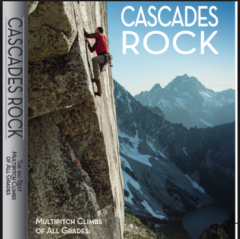
first ascent [TR] Gunsight Peaks Traverse - "Gunrunner" IV 5.10
Blake posted a topic in North Cascades
Trip: Gunsight Peaks Traverse - "Gunrunner" IV 5.10 Date: 7/11/2007 Trip Report: John Scurlock Photo A long-winded TR from a long, windy climb... The Gunsight range is a N-S trending ridgeline of fantastic granite near the southern end of the Ptarmigan Traverse. With four named summits over 8,000' tall and several intermediate pinnacles, it made the perfect candidate for an early July destination. Dan Hilden (Dannible) and I spent 3 full days climbing up there this week, and completed 2 new routes, plus the second ascent of the E. Face. The first day we were tired from the approach, so we didn't aim for anything too big, but found an exciting climb anyhow. I'll let the pictures tell the story... The route begins in the obvious corner which splits the face. We had to downclimb into the icy moat, so the first pitch is about 15' longer than it looks. The first pitch was splitter fingers/hands and ended at a nice ledge. Dan escapes the moat... The next pitch Dan lead around to the right, then straight up through wild loose overhanging chimneys. Here's looking straight down past my shaking toes: The last pitch was an easy romp to the summit where we found great views of Dome and Sinister. Artsy rope throw photo on the descent After playing in the spotlight of a natural cannonhole, we headed back to camp and sorted gear out for the next day. On July 9th we circled around the range along the Chickamin Glacier to the north end, well past the NE peak. We found some great hand cracks which lead to the ridge crest at its terminus and began the traverse. Wide stemming into a perfect hand crack... From the ridge crest we climbed south on fantastic granite above the Chickamin and Blue Glaciers. N->S allows you to climb the steep North faces and descend the south sides of the peaks. Pitch 2 climbs to the left (East) side of the crest and featuresan amazing 5.8 corner and face crack. The day definitely had more of a "climb" feel than a level traverse, and we'd both fully recomend it if you have a complete day in the area. Along the way we had one single rap from the NE peak and one double rap from the middle peak. The fourth pitch on the route was a well-protected face climb leading to an exposed roof on golden rock. We summited the Northeast peak in 7 or 8 pitches, and the climb to there would be a fun grade III. The last pitch to the NE summit actually began by circling around to the right (West) and climbing a chimney and then through the hole in the back of an enormous roof to the top. From there it was on to the North and Middle summits. The West face, in profile on the right, is still awaiting a FFA. There was one spot while climbing up the the North Peak where we were in a face crack which ended, so we pendulumed to the right to join other features. Apart from this bit of aid, the entire climb was done free, and I think we could have avoided it if we had looked ahead more carefully. By the time we summited our third peak (the middle one) I was feeling dehydrated and exhausted, but Dan found his second wind and led on as the sun set. He lead up to the top of the South Peak as the stars came out in force, and we rappeled down onto the Blue Glacier in the dark. The next morning we went to the East Face of the middle peak to climb the route which Sol (Frosty_the_tradman) and friend did last summer. (By the way, congrats to Sol on getting married last weekend, your route is fantastic too!) We broke up the pitches differently, and belayed on comfy ledges. See their trip report for more details. Above this splitter hand crack step right then up the finger crack and continue up the crack in the R-facing corner, over the lip(crux .10d), and to a big ledge. This elminates the need for a hanging belay and as long as you save one hand-sized cam for the last 15', it should be easy gear-wise, because of changing crack sizes. The second to last pitch features a beautiful delicate slab climbing. This face is in shadow all afternoon, and the sunset topout gets a Blake-and-Dan thumbs up. This was a fun trip and Dan is a great partner and camp chef. It was nice climbing with another young punk for once, as we have a combined age of only 41. [edited to add topo -porter] Gear Notes: Single cams Blue alien, #3 Camalot, #4 Camalot Double cams Green alien - #2 Camalot One set of nuts Crampons, Ice axe Should have brought more pringles... Approach Notes: Agnes Creek via Stehekin 3786-3784-Gunrunnertopo.doc- 41 replies
-
- north cascades
- traverse
-
(and 2 more)
Tagged with:
-
Trip: Cathedral Park, BC - Macabre to Grimface Traverse + possible F.A. Date: 7/1/2007 Trip Report: Quick photo TR of a trip to Cathedral Park over the weekend. I had heard great things about the Matriarch to Grimface Traverse and with the weekend forecast looking soggy for Canada Day on the coast we decided that we would head to the dry side of the Cascades and hope for better weather. First day we hiked in via Wall Creek. The Wall Creek approach is highly recommended. It's a cruisy 4 hour affair to the meadows with excellent camping and bouldering! There are a lot of blowdowns but it's still a great approach. The next day we went up to look for things to climb on Matriarch, Macabre, or Grimface. We were looking for a nice line to climb, and preferably something that might be unclimbed. We didn't have the beckey guide so we were going by what we had seen on bivouac and the pages I had cut out of the Fairley Guide. The description in Fairley is vague at best and didn't help much. The buttress just to the right of the South Buttress looked quite nice and we thought it might be unclimbed so we decided to give it a go. The climb was 8 pitches long and mostly easy except for a very short but difficult roof we rated at 5.11a. Most of the climbing was pretty easy 5.6, 5.7, 5.8 type of stuff. We finished the climb just below the bolt ladder on Macabre. From the summit of Macabre we continued on the traverse to Grimface. With the exception of two rappels we kept the rope in the pack the rest of the day. We were back in camp a few hours later. Gear Notes: set of nuts, full rack of cams from #0 tcu to #3 camalot. Approach Notes: Wall Creek Trail from the Ashnola River Road
-

first ascent [TR] Northern Picket Range- Surviving the Fence (N
JoshK posted a topic in North Cascades
Climb: Northern Picket Range-Surviving the Fence (N Picket full ridge traverse) Date of Climb: 7/16/2005 Trip Report: FOR IMMEDIATE AND PREMATURE RELEASE Seattle, WA - On July 16, 2005 Wayne Wallace and Josh Kaplan completed the Northern Picket Range summit ridge traverse, also known as the "Cascade Nonfecta." Sponsering and recording the event was their chief sponsor, "Uncage the Bowels." UTB coordinated the timing effort, hiring experts from Mountaineering Inc. to make sure the effort was "official." The final time came in shortly less than 6 days. In the highest standard of UTB productions and mountainspeedclimbing.org records it must be disclosed that the two elite alpine mountain endurance speed climbers did not operate the speedboat used to travel ross lake. For additional information please contact Uncage the Bowels productions. Summits: Luna -> E Fury -> W Fury -> Swiss -> Spectre -> Phantom -> Ghost -> Crooked Thumb -> Challenger Gear Notes: Used: 60m 8.1mm half rope 50m 7mm perlon rap line BD firstlight tent ghetto-rigged with skipoles instead of real poles super light bivy gear 1 akpine hammer each medium alpine rack Should have had: I should have had rain gear like Wayne did. Approach Notes: Used Access Creek for approach and Eiely-Wiley Ridge for the deproach.- 43 replies
-
- traverse
- north cascades
-
(and 1 more)
Tagged with:
-
This past weekend Mark Bunker (Marko), Wayne Wallace (Wayne1112), and I finished off a long standing project of ours. Our goal was to enchain all of the peaks in the Southern Pickets East-to-West (the East ridges are generally steeper than the West ridges). Mark and I made our first attempt last summer, and got to the Terror-Blob col before being thwarted by weather. Wayne and Jens Klubberud made an attempt earlier this summer, and were defeated by weather after making it to the Inspiration-Pyramid col. The first day we hiked in, and climbed Little Mac, East McMillan, and West McMillan, to a bivy at the col between West McMillan and the gendarmes to its West. The second day we climbed Inspiration, Pyramid, Degenhardt, Terror, and the Blob, to a bivy on the West (lower) summit of the Blob. The third day we climbed East Twin Needle, West Twin Needle, the Himmelhorn, the Ottohorn, and the Frenzelspitz, and then descended to a bivy in Crescent Creek Basin. Along the way we also climbed the named but less significant Blip and Dusseldorfspitz. Today we climbed the Chopping Block as a bonus, descended the Barrier, and hiked out. We believe that the East ridges of the Blob, East Twin Needle, and Himmelhorn are all new routes. The Blob went at 5.9 and the East Twin Needle (on which we actually climbed more of a SE rib) at 5.9+. The East ridge of the Himmelhorn comprised the crux of the entire traverse, with a steep, exposed pitch of 5.10+ (bold lead by Wayne the ropegun). We all agree that it is one of the best climbs we have ever done, and highly reccomend it to those seeking a fantastic alpine adventure!
-
On July 30th Martin Volken from North Bend and Kurt Buchwald from Snoqualmie completed the ridge crest traverse from Spider-Formidable Col to the summit of Mount Formidable. The ridge is about 2 km long, involves a lot of exposed 4th and easy fifth class climbing and some pitches of 5.6 to 5.7 climbing in the center section. We spent 11 hours moving from the Col to the summit of Formidable and approximately 13 hours from camp to camp. It can be said that the ambiance is of classic North Cascades grandeur and the ridge has a wild and exposed feel in many places. It resembles the Torment-Forbidden traverse in many ways. The rock quality ranges from very good to poor. In most places it is ok. In the many notches along the way one finds deteriorating iron laden rock (hence the notch), and shortly above the notches the rock quality generally improves. When the climbing is "hard", the rock seems reliable. The route features more complicated ups and downs than the T-F traverse, but it is more reasonable to bail off the route in two or three places. All in all the route can be split in three sections. Section one goes from the Spider-Formidable col to a distinct summit that we called the 2-county summit (Chelan and Skagit). Section two goes from the 2-county summit to the first reaches of the Formidable Glacier. Section three goes from the Formidable Glacier to the summit. The second section is certainly the most complex and most time consuming, even though the "hardest climbing" occurs on the first section on the way to the 2 county summit. We could not find any info on previous attempts in the summit register, the Beckey guide, the AAJ or by talking to local cascade climbing veterans. The route seemed virgin in terms of impact. We would like to claim this as a first ascent, but would certainly not want to take undeserved claim. If you have any info, feel free to let us know. We ended up rating the route at Grade 4, 5.7 Here is a basic route description: Reach the Spider-Formidable Col via the Ptarmigan traverse route. From Spider-Formidable col at 7350 feet start moving NW and go around rotten tower on the left into the first notch. Get onto better rock and climb generally near the crest to a big flat and easy ridge. From here climb a blocky ridge on good rock generally staying a bit north of the crest to the top of a first distinct tower. From here rappel into the next notch or down climb on the north side of the ridge. This is a distinct spot. You are at the base of a two pitch headwall that leads up towards the "2 county summit". Climb the 2 pitch headwall at 5.6 - 5.7 slightly north of the ridge. Rock is good. Ambiance is awesome. An easy but exposed block ridge will bring you to the "2 county summit" from there. From here climb over small towers or go around on the south side and gain a horizontal section of walkable terrain but stunning exposure. Continue down on easy terrain to the next notch. (Here is an ideal first bail spot to the south) From here continue up a steep and very narrow tower. Exposure is great and rock is good. Now follows a series of lofty gendarmes that involve steep rappels. Be prepared for slower going and harder bail-outs here. Eventually you will gain the notch that leads to a distinct summit just east of the Formidable Glacier. Here is another bail out opportunity to the south. One can also scoot around this summit on the north and reach a small lobe of the Formidable Glacier quite easily. The crossing of the described summit does not present any new challenges, but the rock is not that good. From the Formidable Glacier col we stayed on the crest. It takes a little longer than the described southern ledges in the Beckey guide, but the scenery is wild and the rock is good... From the summit go back down the ridge a short way and then start descending a distinct couloir heading south. At the bottom of the couloir follow easy 3rd class terrain generally trending left a bit until you reach the upper snow fields. Equipment: Good alpine rock boots (Garmont Tower Gtx, La Sportiva Trango S etc), medium size alpine rack, hard hats, light crampons and ice axe for descent ,bivy gear, maybe a light stove (there is snow on the way). There is a good photo of the ridge in the Beckey guide and there will be a photo summary of the traverse on the Pro Guiding Service website in about a week or so. (proguiding.com)

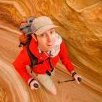
.jpg.60aea9ed73f8877533e95787c508b978.jpg)



